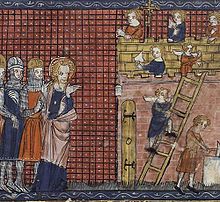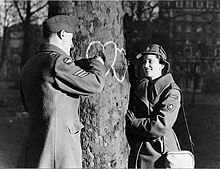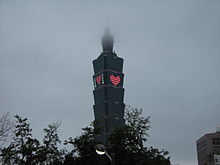
Дата 14 февраля больше известна как День всех влюбленных, или День святого Валентина. Но к ней приурочены и другие знаменательные события, которые отмечают в разных странах земного шара. Юрий Шпаковский, Нина Барковская и Валерия Тананеева рассказали, что и как празднуют в мире 14 февраля.
Праздники, которые пришлись на 14 февраля
Какие праздники 14 февраля? Кроме широко известного Дня святого Валентина, эта календарная дата включает и другие праздничные события, среди которых Международный день дарения книг, неофициальный День компьютерщика, день святых Кирилла и Мефодия, древний народный праздник в скандинавских странах и православный день памяти святого мученика Трифона.
День святого Валентина
Какой праздник 14 февраля? Во всем мире празднуют День святого Валентина, или День влюбленных. Католическая церковь 14 февраля сотни лет отмечала день памяти святого Валентина. Сегодня весь мир знаком с легендой о священнике, которого казнили за совершение тайных обрядов венчания. Со временем день стал праздником влюбленных на всех континентах.
В честь какой именно исторической личности возник День святого Валентина, точно не известно. Профессор, доктор юридических наук Юрий Шпаковский приводит легенды о двух Валентинах:
- Один был священником в армии римского императора Клавдия II и тайно венчал влюбленных. В то время существовал указ, который запрещал тем, кто состоял на военной службе, обзаводиться семьей.
- Второй — знатный патриций и тайный христианин, который обращал в новую веру и венчал своих слуг.
Оба были казнены, почитались как мученики. В V веке в христианском календаре появился день памяти мученика Валентина, который приурочили к дате казни священника 14 февраля. В Западной Европе праздник стал широко отмечаться с XIII века.
В 1969 году из католического календаря изъят ряд римских святых, сведения о которых были противоречивы или недостоверны. Попал под эту реформу и святой Валентин. Но праздник к тому времени уже прижился в мире как День всех влюбленных и в таком качестве не теряет своей популярности и сегодня.
Международный день дарения книг
Праздник существует всего 10 лет. В мире электронных гаджетов многих людей тревожит снижение интереса к чтению бумажных книг, особенно у детей. Культура чтения, как подчеркивает профессор, доктор филологии Нина Барковская, очень важна для психологического и интеллектуального развития личности, для формирования благоприятного содружества в семьях.
Инициатором праздника считают американку Эмми Бродмур, основательницу сайта детской книги. Ее поддержали люди, которые считают книги духовной ценностью. Популярность акции «Дарите книги с любовью» с каждым годом растет.
День компьютерщика
Неофициальный праздник отмечается в профессиональной среде. Дата выбрана не случайно: 14 февраля 1946 года продемонстрировали первый работающий компьютер. Тогда он был создан на средства и нужды армии, в основном для расчета баллистических таблиц.
День святых Кирилла и Мефодия
Эти исторические личности почитаются во всем христианском мире: у католиков их день поминовения приходится на 14 февраля, у православных — на 24 мая.
Свою миссию просветителей Кирилл и Мефодий осуществляли в середине IX века. Тогда они перевели Священное Писание и другие богослужебные книги с греческого на славянский язык. Благодаря этому славянские народы легче воспринимали новую веру, стали лучше понимать церковные богослужения.
Письменность, как пишет Валерия Тананеева, один из важнейших признаков цивилизации. Основы славянской письменности были заложены Кириллом и Мефодием. Они создали славянскую азбуку с учетом всех особенностей языка славян.
Народные праздники 14 февраля
В скандинавских странах сохраняет популярность Дистинг — один из главных языческих праздников, который посвящен победе солнца над морозом, приближению тепла и пробуждению природы.
Православная церковь отмечает 14 февраля День памяти святого мученика Трифона. В народе он известен тем, что силой молитвы мог изгнать вредителей посевов с полей и огородов.
Как в мире празднуют и что дарят на День святого Валентина
Как празднуют День святого Валентина в разных странах? Главный символ Дня влюбленных — открытка в форме сердечка с поздравлением или признанием в любви. Традиционные подарки — цветы и сладости. Главный цвет праздника — красный — цвет страсти. Но в разных странах сложились свои особые традиции празднования и даров, которые преподносят любимым людям.
Англия
Считается, что именно здесь в Средние века возникли прототипы валентинок. Кавалеры пели или декламировали романтические четверостишия, записывали их на цветном пергаменте и посылали своим избранницам.
В Уэльсе в этот день дарят вырезанные из дерева ложки любви, украшенные сердечками и символическими ключами от сердца. У англичан, кроме сладостей и сердечек, 14 февраля часто дарят мягкую игрушку — медвежонка Тедди. В Англии в этот праздник поздравляют не только людей, но и любимых домашних животных.
Германия
У немцев в этот день не все однозначно. Многие отмечают 14 февраля традиционно — дарят букеты из роз, маргариток, хризантем, выражая чувства языком цветов. Помолвленные пары посещают церковь, чтобы получить благословение.
Но кое-кто считает святого Валентина покровителем не влюбленных, а психически больных. Последователи такой точки зрения украшают в этот день алыми лентами психиатрические лечебницы.
Дания
Праздник отмечают шумно, устраивают массовые концерты, всенародные гуляния, вечеринки, ярмарки. Послания-валентинки у датчан подписывать не принято — догадайся, мол, сама. Дарят не красные, а белые цветы, причем не только свежие, но и засушенные или искусственные.
Италия
Страна претендует на роль основоположницы праздника как родина святого Валентина и место его упокоения. Каждый год 14 февраля — «сладкий день» для всех итальянцев. Они дарят конфеты и печенье в форме сердечек. Популярный подарок в этот день — фундук в шоколаде. В нем скрыты любовные записочки на 4 языках. Для одиноких женщин это волнующий день гаданий — встретит ли она суженого, выйдет ли замуж.
Нидерланды
Кроме традиционных обрядов и подарков, эта страна отличается оригинальным обычаем этого дня: женщины 14 февраля делают избранному мужчине предложение. Если он отказывается — обязан подарить даме шелковое платье.
США
За океан традиция празднования Дня святого Валентина прибыла с переселенцами из Европы. Здесь это праздник всеобщий и поздравляют всех, кого любят — родителей, детей, дедушек-бабушек, а не только возлюбленных. Устраивают веселые вечеринки для взрослых и детские утренники.
Первоначально, в XIX веке, американцы дарили в этот день марципаны — дорогие в то время сладости. Сейчас традиционный подарок — большой леденец на палочке в форме сердечка.
Франция
У галантных французов 14 февраля — один из самых почитаемых праздников. Кафе и ресторанчики переполнены парами. Некоторые отправляются в короткие романтические путешествия. Самые талантливые помещают свои любовные послания на электронных табло городских улиц.
С традиционными сладостями и цветами французы дарят драгоценности, дорогое белье, счастливые лотерейные билетики.
Есть в стране место паломничества — деревушка святого Валентина. Для влюбленных пар ее посещение гарантирует счастливое супружество.
В постсоветских странах
Традиция отмечать День всех влюбленных в странах, которые входили в СССР, в том числе в Казахстане, распространилась недавно. Отмечают его классическими поздравлениями-валентинками, цветами, конфетами и индивидуальными подарками.
Когда-то церковный праздник прочно занял место в мировой культуре. Многие народы имеют собственные национальные праздники, которые посвящены любви или легендарным парам. Но День влюбленных, 14 февраля, стал популярным праздником, который празднуют влюбленные всего мира.
Оригинал статьи: https://www.nur.kz/leisure/holidays/1716718-14-fevrala-prazdniki-v-raznyh-stranah-mira/
-
© 2005—2023 Проект «Календарь событий»
-
- О проекте
- Реклама
- Контакты
- Информеры
- Условия использования сайта
- Пользовательское соглашение
- Политика конфиденциальности
-
Учредитель — ООО «Квантор»
Адрес учредителя: 198516 Санкт-Петербург, г. Петергоф, Санкт-Петербургский пр., д.60, лит.А, ч.п. 2-Н, оф.432, 434
Издатель —
ООО «МЕДИО»
Адрес издателя: 198516 Санкт-Петербург, г. Петергоф, Санкт-Петербургский пр., д.60, лит.А, ч.п. 2-Н, оф.440
Главный редактор — Комарова Мария Сергеевна
Адрес редакции:
198516 Санкт-Петербург, г. Петергоф,
Санкт-Петербургский пр., д.60, лит.А, ч.п. 2-Н, оф.432, 434
Телефон:+7 812 640-06-60
Электронная почта: hello@medio.pro
Использование любой информации CALEND.RU на веб-сайтах возможно только при условии наличия у каждого скопированного материала активной гиперссылки на страницу-источник.
Использование информации сайта в оффлайн-СМИ (радио, телевидение, газеты и т.п.) требует особого согласования.
Для согласования отправьте запрос.
Изменить настройки конфиденциальности (только для жителей EEA).
31 января 2023, 16:20 — Общественная служба новостей — ОСН
14 февраля во многих странах мира отмечается День святого Валентина или День всех влюбленных. Ранее мы уже писали об истории праздника. О том, как отмечают День святого Валентина в разных странах мира, узнала Общественная служба новостей.
Чаще всего на День святого Валентина влюбленные дарят друг другу милые подарки, устраивают романтические ужины и признаются в любви. Однако в некоторых странах существуют свои особенности и традиции.
Дания
К примеру, в Дании существует традиция на 14 февраля дарить друг другу белые цветы, причем не только живые, но и сделанные из бумаги. Такие цветы называют подснежниками, и в Дании они ассоциируются с любовью ко второй половинке. Помимо этого влюбленные презентуют друг другу открытки со стихами.
Франция
Франция очень романтичная страна, ведь не даром считается, что первая «валентинка» появилась как раз оттуда, когда в 1415 году герцог Карл писал своей жене любовные письма из заключения в Тауэре.
Сегодня во Франции в День святого Валентина принято устраивать романтические ужины, дарить цветы и признания в любви, которые даже могут разместить на рекламных щитах города. Главное — подать заявку на сайте, оказаться в числе счастливчиков, которых выберут, и уложиться в 160 символов.
Южная Корея
В Южной Корее с 14 февраля поздравляют исключительно мужчин. Женщины готовят для них сюрпризы и дарят подарки. Ровно через месяц 14 марта наступает очередь мужчин выказывать свои чувства и дарить подарки возлюбленным.
Англия
В Англии есть такой персонаж Джек Валентайн, который в День всех влюбленных приносит подарки детям. Оставляет он их на пороге дома. Дети с нетерпением ждут от Джека сладостей и внимания.
Филиппины
По традиции на Филиппинах заключают браки именно 14 февраля, причем массово. В этот день парочки собираются в общественных местах, чтобы обновить уже данные друг другу клятвы.
Италия
В Италии праздник связан с разными традициями и приметами. К примеру, женщина должна проснуться до рассвета, и первый мужчина, которого она увидит, будет ее будущим мужем. Сегодня в День всех влюбленных итальянцы дарят друг другу романтические презенты и свидания. Одним из популярных подарков являются шоколадные конфеты с любовными цитатами на обертках.
Южная Африка
В Южной Африке есть традиция: женщины 14 февраля прикрепляют к рукавам рубашки имена своих возлюбленных. И некоторые мужчины именно так узнают о чувствах к ним.
Болгария
В Болгарии 14 февраля отмечают День виноделов. Влюбленные нередко отмечают День святого Валентина за бокалом местного напитка.
Эстония
В Эстонии 14 февраля — День дружбы. Поэтому праздник отмечают абсолютно все: и дети, и одиночки.
13.02.2018 14:54
Примерное время чтения: 3 минуты
4687
От любви до шизофрении. Как в разных странах отмечают День всех влюблённых
«АиФ на Енисее» №7 (1944) 14/02/2018

14 февраля отмечают практически во всех странах. pixabay.com
День святого Валентина празднуют в самых разных уголках планеты. Однако делают это по-разному. И если у одних принято дарить в этот день своим вторым половинкам сладости и поздравительные открытки, то другие идут украшать психбольницы. Корреспондент «АиФ -Красноярск» узнала, как в других странах отмечают 14 февраля.
Валентинка как признание
Для большинства россиян День влюблённых ассоциируется с пришедшим с Запада Днём святого Валентина. В России этот праздник стал популярен с 1990-х годов. Отмечают его все по-разному. Одни устраивают для своих половинок романтические вечера с сюрпризами, другие просто идут в кино на вечерний показ, а для некоторых это и вовсе не повод для гуляний. Чаще всего в качестве признания в любви в России дарят открытки в форме сердечка. Также традиционно в этот день любимым и дорогим людям принято дарить цветы, конфеты, игрушки и воздушные шарики.
Кстати, проведённый на сайте «АиФ-Красноярск» опрос показал, что празднование Дня всех влюблённых с каждым годом становится менее популярным. 88% опрошенных сошлись во мнении, что этот праздник не наш, поэтому отмечать его не будут.
Покровитель психбольных
Но не во всех странах отмечают 14 февраля как День влюблённых. Например, в Германии это день психически больных людей. Немцы верят, что святой Валентин — покровитель всех душевнобольных. Поэтому в этот день все специализированные лечебницы украшают алыми ленточками и фигурками ангелов, а в часовнях священники проводят богослужение о здравии больных людей.
Кстати, многие находят нечто символическое в том, что День влюблённых и День психически больных отмечаются в одну дату, так как, влюбляясь, человек руководствуется не здравым смыслом, а эмоциями.
Массовый поцелуй
Необычным способом 14 февраля отмечают в Белоруссии. В этот день там устраивают акции массовых поцелуев. Находясь в парках, скверах, на стадионах или просто прогуливаясь по городу, влюблённые по команде обмениваются «затяжным» поцелуем.
В качестве подарка белорусы предпочитают праздничные открытки, цветы и сладости.
Штраф за отказ от женитьбы
Оригинальностью отличились также жители Канады, которые в День всех влюблённых поздравляют не только своих родных, но и животных. В местном зоопарке даже разрешён бесплатный вход тем, кто принесёт животным валентинку. Однако не все канадцы рады празднику. Так, 14 февраля женщины имеют право сделать предложение любому понравившемуся мужчине. Причём отказ от такого предложения выльется в копеечку. Дело в том, что, по законам страны, бедолага, отказавший женщине, карается тюремным заключением или денежной компенсацией. Эта кара обходит стороной только женатых или «занятых» представителей сильного пола.
Сладкий день
День святого Валентина в Италии можно назвать сладким днём. Большинство влюблённых пар предпочитают дарить друг другу различные сладости. Наибольшей популярностью пользуются орешки фундука в шоколаде. В каждой такой конфете скрывается записка на любовную тему на четырёх языках мира. Также спросом среди итальянцев пользуются цветы, парфюм и украшения.
Камень на шею
В Исландии празднование Дня всех влюблённых не обходится без костра. Но забавно не это, а обычай поздравлять друг друга. Так, девушки в качестве подарка вешают парням на шею головёшки, те же в свою очередь пытаются повесить им на шею камушек. Смысл этого ритуала в том, что для зажжения костра обязательно нужно высечь искру ударом камня о камень.
Как видно, необычных способов отметить 14 февраля и подарков к этому дню существует немало. Но всё равно в большинстве стран День святого Валентина — это праздник всех влюблённых, суть которого не в сюрпризах, а во внимании друг к другу.
По одной из версий, имя этому празднику дал простой христианский священник Валентин, который тайно венчал влюблённых легионеров, за что потом и был казнён.
Также вам может быть интересно
| Valentine’s Day | |
|---|---|
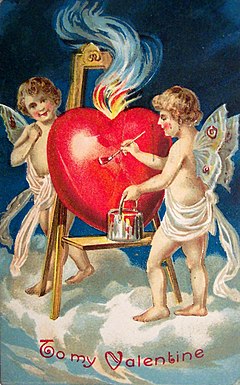
1909 Valentine’s card |
|
| Also called | Saint Valentine’s Day or the Feast of Saint Valentine |
| Observed by | People in many countries; Anglican Communion (see calendar) Lutheran Church (see calendar) Traditionalist Catholicism (see calendar) |
| Type | Christian, romantic, cultural, commercial observance |
| Significance | Feast day of Saint Valentine; the celebration of love and affection |
| Observances | Sending greeting cards and gifts, dating, church services, novenas |
| Date |
|
| Frequency | Annual |
Valentine’s Day, also called Saint Valentine’s Day or the Feast of Saint Valentine,[1] is celebrated annually on February 14.[2] It originated as a Christian feast day honoring one or two early Christian martyrs named Saint Valentine and, through later folk traditions, has become a significant cultural, religious, and commercial celebration of romance and love in many regions of the world.[3]
There are a number of martyrdom stories associated with various Valentines connected to February 14,[4] including an account of the imprisonment of Saint Valentine of Rome for ministering to Christians persecuted under the Roman Empire in the third century.[5][6] According to an early tradition, Saint Valentine restored sight to the blind daughter of his jailer.[7] Numerous later additions to the legend have better related it to the theme of love: an 18th-century embellishment to the legend claims he wrote the jailer’s daughter a letter signed «Your Valentine» as a farewell before his execution;[8] another tradition posits that Saint Valentine performed weddings for Christian soldiers who were forbidden to marry.[6]
The 8th century Gelasian Sacramentary recorded the celebration of the Feast of Saint Valentine on February 14.[9][10] The day became associated with romantic love in the 14th and 15th centuries when notions of courtly love flourished, apparently by association with the «lovebirds» of early spring. In 18th-century England, it grew into an occasion in which couples expressed their love for each other by presenting flowers, offering confectionery, and sending greeting cards (known as «valentines»). Valentine’s Day symbols that are used today include the heart-shaped outline, doves, and the figure of the winged Cupid. Since the 19th century, handwritten valentines have given way to mass-produced greeting cards.[11] In Italy, Saint Valentine’s Keys are given to lovers «as a romantic symbol and an invitation to unlock the giver’s heart», as well as to children to ward off epilepsy (called Saint Valentine’s Malady).[12]
Saint Valentine’s Day is not a public holiday in any country, although it is an official feast day in the Anglican Communion[13] and the Lutheran Church.[14] Many parts of the Eastern Orthodox Church also celebrate Saint Valentine’s Day on July 6 in honor of Roman presbyter Saint Valentine, and on July 30 in honor of Hieromartyr Valentine, the Bishop of Interamna (modern Terni).[15]
Saint Valentine
History
Numerous early Christian martyrs were named Valentine.[16] The Valentines honored on February 14 are Valentine of Rome (Valentinus presb. m. Romae) and Valentine of Terni (Valentinus ep. Interamnensis m. Romae).[17] Valentine of Rome was a priest in Rome who was martyred in 269 and was added to the calendar of saints by Pope Gelasius I in 496 and was buried on the Via Flaminia. The relics of Saint Valentine were kept in the Church and Catacombs of San Valentino in Rome, which «remained an important pilgrim site throughout the Middle Ages until the relics of St. Valentine were transferred to the church of Santa Prassede during the pontificate of Nicholas IV».[18][19] The flower-crowned skull of Saint Valentine is exhibited in the Basilica of Santa Maria in Cosmedin, Rome. Other relics are found at Whitefriar Street Carmelite Church in Dublin, Ireland.[20]
Valentine of Terni became bishop of Interamna (now Terni, in central Italy) and is said to have been martyred during the persecution under Emperor Aurelian in 273. He is buried on the Via Flaminia, but in a different location from Valentine of Rome. His relics are at the Basilica of Saint Valentine in Terni (Basilica di San Valentino). Professor Jack B. Oruch of the University of Kansas notes that «abstracts of the acts of the two saints were in nearly every church and monastery of Europe.»[21] The Catholic Encyclopedia also speaks of a third saint named Valentine who was mentioned in early martyrologies under date of February 14. He was martyred in Africa with a number of companions, but nothing more is known about him.[22] A relic claimed to be Saint Valentine of Terni’s head was preserved in the abbey of New Minster, Winchester, and venerated.[23]
February 14 is celebrated as St. Valentine’s Day in various Christian denominations; it has, for example, the rank of ‘commemoration’ in the calendar of saints in the Anglican Communion.[13] In addition, the feast day of Saint Valentine is also given in the calendar of saints of the Lutheran Church.[14] However, in the 1969 revision of the Roman Catholic Calendar of Saints, the feast day of Saint Valentine on February 14 was removed from the General Roman Calendar and relegated to particular (local or even national) calendars for the following reason: «Though the memorial of Saint Valentine is ancient, it is left to particular calendars, since, apart from his name, nothing is known of Saint Valentine except that he was buried on the Via Flaminia on February 14.»[24]
The feast day is still celebrated in Balzan (Malta) where relics of the saint are claimed to be found, and also throughout the world by Traditionalist Catholics who follow the older, pre-Second Vatican Council calendar (see General Roman Calendar of 1960).
In the Eastern Orthodox Church, St. Valentine is recognized on July 6, in which Saint Valentine, the Roman presbyter, is honoured; in addition, the Eastern Orthodox Church observes the feast of Hieromartyr Valentine, Bishop of Interamna, on July 30.[25][26][27]
J.C. Cooper, in The Dictionary of Christianity, writes that Saint Valentine was «a priest of Rome who was imprisoned for succouring persecuted Christians.»[28] Contemporary records of Saint Valentine were most probably destroyed during this Diocletianic Persecution in the early 4th century.[29] In the 5th or 6th century, a work called Passio Marii et Marthae published a story of martyrdom for Saint Valentine of Rome, perhaps by borrowing tortures that happened to other saints, as was usual in the literature of that period. The same events are also found in Bede’s Martyrology, which was compiled in the 8th century.[29][30] It states that Saint Valentine was persecuted as a Christian and interrogated by Roman Emperor Claudius II in person. Claudius was impressed by Valentine and had a discussion with him, attempting to get him to convert to Roman paganism in order to save his life. Valentine refused and tried to convert Claudius to Christianity instead. Because of this, he was executed. Before his execution, he is reported to have performed a miracle by healing Julia, the blind daughter of his jailer Asterius. The jailer’s daughter and his forty-six member household (family members and servants) came to believe in Jesus and were baptized.[31][29]
A later Passio repeated the legend, adding that Pope Julius I built a church over his sepulchre (it is a confusion with a 4th-century tribune called Valentino who donated land to build a church at a time when Julius was a Pope).[30] The legend was picked up as fact by later martyrologies, starting with Bede’s martyrology in the 8th century.[30] It was repeated in the 13th century, in The Golden Legend.[32]
There is an additional embellishment to The Golden Legend, which according to Henry Ansgar Kelly, was added in the 18th century and widely repeated.[33] On the evening before Valentine was to be executed, he is supposed to have written the first «valentine» card himself, addressed to the daughter of his jailer Asterius, who was no longer blind, signing as «Your Valentine.»[33] The expression «From your Valentine» was later adopted by modern Valentine letters.[34] This legend has been published by both American Greetings and The History Channel.[35]
John Foxe, an English historian, as well as the Order of Carmelites, state that Saint Valentine was buried in the Church of Praxedes in Rome, located near the cemetery of Saint Hippolytus. This order says that according to legend, «Julia herself planted a pink-blossomed almond tree near his grave. Today, the almond tree remains a symbol of abiding love and friendship.»[36][37]
Another embellishment suggests that Saint Valentine performed clandestine Christian weddings for soldiers who were forbidden to marry.[38] The Roman Emperor Claudius II supposedly forbade this in order to grow his army, believing that married men did not make for good soldiers.[38][39] However, George Monger writes that this marriage ban was never issued and that Claudius II told his soldiers to take two or three women for themselves after his victory over the Goths.[40]
According to legend, in order «to remind these men of their vows and God’s love, Saint Valentine is said to have cut hearts from parchment», giving them to these soldiers and persecuted Christians, a possible origin of the widespread use of hearts on St. Valentine’s Day.[41]
Saint Valentine supposedly wore a purple amethyst ring, customarily worn on the hands of Christian bishops with an image of Cupid engraved in it, a recognizable symbol associated with love that was legal under the Roman Empire;[39][42] Roman soldiers would recognize the ring and ask him to perform marriage for them.[39] Probably due to the association with Saint Valentine, amethyst has become the birthstone of February, which is thought to attract love.[43]
Folk traditions
While the European folk traditions connected with Saint Valentine and St. Valentine’s Day have become marginalized by modern customs connecting the day with romantic love, there are still some connections with the advent of spring.
While the custom of sending cards, flowers, chocolates and other gifts originated in the UK, Valentine’s Day still remains connected with various regional customs in England. In Norfolk, a character called ‘Jack’ Valentine knocks on the rear door of houses leaving sweets and presents for children. Although he was leaving treats, many children were scared of this mystical person.[44][45]
In Slovenia, Saint Valentine or Zdravko was one of the saints of spring, the saint of good health and the patron of beekeepers and pilgrims.[46]
A proverb says that «Saint Valentine brings the keys of roots». Plants and flowers start to grow on this day. It has been celebrated as the day when the first work in the vineyards and in the fields commences. It is also said that birds propose to each other or marry on that day. Another proverb says «Valentin – prvi spomladin» («Valentine – the first spring saint»), as in some places (especially White Carniola), Saint Valentine marks the beginning of spring.[47] Valentine’s Day has only recently been celebrated as the day of love. The day of love was traditionally March 12, the Saint Gregory’s day, or February 22, Saint Vincent’s Day. The patron of love was Saint Anthony, whose day has been celebrated on June 13.[46]
Connection with romantic love
Possible ancient origins
The «Feast» (Latin: «in natali», lit.: on the birthday) of Saint Valentine originated in Christendom and has been marked by the Western Church of Christendom in honour of one of the Christian martyrs named Valentine, as recorded in the 8th century Gelasian Sacramentary.[21][10] In Ancient Rome, Lupercalia was observed February 13–15 on behalf of Pan & Juno, pagan gods of love, marriage & fertility. It was a rite connected to purification and health, and had only slight connection to fertility (as a part of health) and none to love. The celebration of Saint Valentine is not known to have had any romantic connotations until Chaucer’s poetry about «Valentine’s Day» in the 14th century, some seven hundred years after celebration of Lupercalia is believed to have ceased.[29] Lupercalia was a festival local to the city of Rome. The more general Festival of Juno Februa, meaning «Juno the purifier» or «the chaste Juno», was celebrated on February 13–14. Although the Pope Gelasius I (492–496) article in the Catholic Encyclopedia says that he abolished Lupercalia, theologian and Methodist minister Bruce Forbes wrote that «no evidence» has been demonstrated to link St. Valentine’s Day and the rites of the ancient Roman purification festival of Lupercalia, despite claims by many authors to the contrary.[notes 1][23][48][49]
Some researchers have theorized that Gelasius I replaced Lupercalia with the celebration of the Purification of the Blessed Virgin Mary and claim a connection to the 14th century’s connotations of romantic love, but there is no historical indication that he ever intended such a thing.[notes 2][49][50] Also, the dates do not fit because at the time of Gelasius I, the feast was only celebrated in Jerusalem, and it was on February 14 only because Jerusalem placed the Nativity of Jesus (Christmas) on January 6.[notes 3] Although it was called «Purification of the Blessed Virgin Mary», it also dealt with the presentation of Jesus at the temple.[51] Jerusalem’s Purification of the Blessed Virgin Mary on February 14 became the Presentation of Jesus at the Temple on February 2 as it was introduced to Rome and other places in the sixth century, after Gelasius I’s time.[51]
Alban Butler in his The Lives of the Fathers, Martyrs, and Other Principal Saints (1756–1759) claimed without proof that men and women in Lupercalia drew names from a jar to make couples, and that modern Valentine’s letters originated from this custom. In reality, this practice originated in the Middle Ages, with no link to Lupercalia, with men drawing the names of girls at random to couple with them. This custom was combated by priests, for example by Frances de Sales around 1600, apparently by replacing it with a religious custom of girls drawing the names of apostles from the altar. However, this religious custom is recorded as soon as the 13th century in the life of Saint Elizabeth of Hungary, so it could have a different origin.[23]
Chaucer’s Parliament of Fowls
The first recorded association of Valentine’s Day with romantic love is believed to be in the Parliament of Fowls (1382) by Geoffrey Chaucer, a dream vision portraying a parliament for birds to choose their mates.[29] Honoring the first anniversary of the engagement of fifteen-year-old King Richard II of England to fifteen-year-old Anne of Bohemia,[52] Chaucer wrote (in Middle English):
«For this was on seynt Valentynes day
Whan every foul cometh there to chese his make
Of every kynde that men thynke may
And that so huge a noyse gan they make
That erthe, and eyr, and tre, and every lake
So ful was, that unethe was there space
For me to stonde, so ful was al the place.»[53][54]
In modern English:
«For this was on Saint Valentine’s Day
When every bird comes there to choose his match
Of every kind that men may think of
And that so huge a noise they began to make
That earth and air and tree and every lake
Was so full, that not easily was there space
For me to stand—so full was all the place.»
Readers have uncritically assumed that Chaucer was referring to February 14 as Valentine’s Day. Henry Ansgar Kelly has observed that Chaucer might have had in mind the feast day of St. Valentine of Genoa, an early bishop of Genoa who died around AD 307; it was probably celebrated on 3 May.[52][55][56] A treaty providing for Richard II and Anne’s marriage, the subject of the poem, was signed on May 2, 1381.[57]
Jack B. Oruch notes that the date on which spring begins has changed since Chaucer’s time because of the precession of the equinoxes and the introduction of the more accurate Gregorian calendar only in 1582. On the Julian calendar in use in Chaucer’s time, February 14 would have fallen on the date now called February 23, a time when some birds have started mating and nesting in England.[29]
Chaucer’s Parliament of Fowls refers to a supposedly established tradition, but there is no record of such a tradition before Chaucer. The speculative derivation of sentimental customs from the distant past began with 18th-century antiquaries, notably Alban Butler, the author of Butler’s Lives of Saints, and have been perpetuated even by respectable modern scholars. Most notably, «the idea that Valentine’s Day customs perpetuated those of the Roman Lupercalia has been accepted uncritically and repeated, in various forms, up to the present».[23][58]
Three other authors who made poems about birds mating on St. Valentine’s Day around the same years: Otton de Grandson from Savoy, John Gower from England, and a knight called Pardo from Valencia. Chaucer most probably predated all of them; but due to the difficulty of dating medieval works, it is not possible to ascertain which of the four may have influenced the others.[59]
Court of love
The earliest description of February 14 as an annual celebration of love appears in the Charter of the Court of Love. The charter, allegedly issued by Charles VI of France at Mantes-la-Jolie in 1400, describes lavish festivities to be attended by several members of the royal court, including a feast, amorous song and poetry competitions, jousting and dancing.[60] Amid these festivities, the attending ladies would hear and rule on disputes from lovers.[61] No other record of the court exists, and none of those named in the charter were present at Mantes except Charles’s queen, Isabeau of Bavaria, who may well have imagined it all while waiting out a plague.[60]
Valentine poetry
The earliest surviving valentine is a 15th-century rondeau written by Charles, Duke of Orléans to his wife, which commences.
«Je suis desja d’amour tanné
Ma tres doulce Valentinée…»— Charles d’Orléans, Rondeau VI, lines 1–2[62]
At the time, the duke was being held in the Tower of London following his capture at the Battle of Agincourt, 1415.[63]
The earliest surviving valentines in English appear to be those in the Paston Letters, written in 1477 by Margery Brewes to her future husband John Paston «my right well-beloved Valentine».[64]
Valentine’s Day is mentioned ruefully by Ophelia in William Shakespeare’s Hamlet (1600–1601):
«To-morrow is Saint Valentine’s day,
All in the morning betime,
And I a maid at your window,
To be your Valentine.
Then up he rose, and donn’d his clothes,
And dupp’d the chamber-door;
Let in the maid, that out a maid
Never departed more.»— William Shakespeare, Hamlet, Act IV, Scene 5
John Donne used the legend of the marriage of the birds as the starting point for his epithalamion celebrating the marriage of Elizabeth, daughter of James I of England, and Frederick V, Elector Palatine, on Valentine’s Day:
«Hayle Bishop Valentine whose day this is
All the Ayre is thy Diocese
And all the chirping Queristers
And other birds ar thy parishioners
Thou marryest every yeare
The Lyrick Lark, and the graue whispering Doue,
The Sparrow that neglects his life for loue,
The houshold bird with the redd stomacher
Thou makst the Blackbird speede as soone,
As doth the Goldfinch, or the Halcyon
The Husband Cock lookes out and soone is spedd
And meets his wife, which brings her feather-bed.
This day more cheerfully than ever shineThis day which might inflame thy selfe old Valentine.»
— John Donne, Epithalamion Vpon Frederick Count Palatine and the Lady Elizabeth marryed on St. Valentines day
The verse «Roses are red» echoes conventions traceable as far back as Edmund Spenser’s epic The Faerie Queene (1590):
«She bath’d with roses red, and violets blew,
And all the sweetest flowres [sic], that in the forrest grew.»[65]
The modern cliché Valentine’s Day poem can be found in Gammer Gurton’s Garland (1784), a collection of English nursery rhymes published in London by Joseph Johnson:
«The rose is red, the violet’s blue,
The honey’s sweet, and so are you.
Thou art my love and I am thine;
I drew thee to my Valentine:
The lot was cast and then I drew,And Fortune said it shou’d be you.»[66][67]
Modern times
In 1797, a British publisher issued The Young Man’s Valentine Writer, which contained scores of suggested sentimental verses for the young lover unable to compose his own. Printers had already begun producing a limited number of cards with verses and sketches, called «mechanical valentines.» Paper Valentines became so popular in England in the early 19th century that they were assembled in factories. Fancy Valentines were made with real lace and ribbons, with paper lace introduced in the mid-19th century.[68] In 1835, 60,000 Valentine cards were sent by post in the United Kingdom, despite postage being expensive.[69]
A reduction in postal rates following Sir Rowland Hill’s postal reforms with the 1840 invention of the postage stamp (Penny Black) saw the number of Valentines posted increase, with 400,000 sent just one year after its invention, and ushered in the less personal but easier practice of mailing Valentines.[70] That made it possible for the first time to exchange cards anonymously, which is taken as the reason for the sudden appearance of racy verse in an era otherwise prudishly Victorian.[71] Production increased, «Cupid’s Manufactory» as Charles Dickens termed it, with over 3,000 women employed in manufacturing.[70] The Laura Seddon Greeting Card Collection at Manchester Metropolitan University gathers 450 Valentine’s Day cards dating from early nineteenth century Britain, printed by the major publishers of the day.[72] The collection appears in Seddon’s book Victorian Valentines (1996).[73]
Flowers, such as red roses (pictured), are often sent on Valentine’s Day.
In the United States, the first mass-produced Valentines of embossed paper lace were produced and sold shortly after 1847 by Esther Howland (1828–1904) of Worcester, Massachusetts.[74][75] Her father operated a large book and stationery store, but Howland took her inspiration from an English Valentine she had received from a business associate of her father.[76][77] Intrigued with the idea of making similar Valentines, Howland began her business by importing paper lace and floral decorations from England.[77][78] A writer in Graham’s American Monthly observed in 1849, «Saint Valentine’s Day … is becoming, nay it has become, a national holyday.»[79] The English practice of sending Valentine’s cards was established enough to feature as a plot device in Elizabeth Gaskell’s Mr. Harrison’s Confessions (1851): «I burst in with my explanations: ‘The valentine I know nothing about.’ ‘It is in your handwriting’, said he coldly.»[80] Since 2001, the Greeting Card Association has been giving an annual «Esther Howland Award for a Greeting Card Visionary».[75]
Since the 19th century, handwritten notes have given way to mass-produced greeting cards.[11] In the UK, just under half of the population spend money on their Valentines, and around £1.9 billion was spent in 2015 on cards, flowers, chocolates and other gifts.[81] The mid-19th century Valentine’s Day trade was a harbinger of further commercialized holidays in the U.S. to follow.[82]
A gift box of chocolates, which is a common gift for Valentine’s Day
In 1868, the British chocolate company Cadbury created Fancy Boxes – a decorated box of chocolates – in the shape of a heart for Valentine’s Day.[83][84] Boxes of filled chocolates quickly became associated with the holiday.[83] In the second half of the 20th century, the practice of exchanging cards was extended to all manner of gifts, such as giving jewelry.
The U.S. Greeting Card Association estimates that approximately 190 million valentines are sent each year in the US. Half of those valentines are given to family members other than husband or wife, usually to children. When the valentine-exchange cards made in school activities are included the figure goes up to 1 billion, and teachers become the people receiving the most valentines.[74] The average valentine’s spending has increased every year in the U.S, from $108 a person in 2010 to $131 in 2013.[85]
The rise of Internet popularity at the turn of the millennium is creating new traditions. Millions of people use, every year, digital means of creating and sending Valentine’s Day greeting messages such as e-cards, love coupons or printable greeting cards. Valentine’s Day is considered by some to be a Hallmark holiday due to its commercialization.[86]
In the modern era, liturgically, the Lutheran Church and Anglican Church have a service for St. Valentine’s Day (the Feast of St. Valentine), which includes the optional rite of the renewal of marriage vows.[87][88] In 2016, the Catholic Bishops of England and Wales established a novena prayer «to support single people seeking a spouse ahead of St Valentine’s Day.»[89]
Celebration and status worldwide
Valentine’s Day customs – sending greeting cards (known as «valentines»), offering confectionery and presenting flowers – developed in early modern England and spread throughout the English-speaking world in the 19th century. In the later 20th and early 21st centuries, these customs spread to other countries, like those of Halloween, or than aspects of Christmas, (such as Santa Claus).
Valentine’s Day is celebrated in many East Asian countries with Singaporeans, Chinese and South Koreans spending the most money on Valentine’s gifts.[90]
Americas
Latin America
In most Latin American countries, for example, Costa Rica,[91] Mexico,[92] and the U.S. territory of Puerto Rico, Saint Valentine’s Day is known as Día de los Enamorados (‘Day of Lovers’)[93] or as Día del Amor y la Amistad (‘Day of Love and Friendship’). It is also common to see people perform «acts of appreciation» for their friends.[94]
In Guatemala it is known as Día del Cariño (‘Affection Day’).[95] Some countries, in particular the Dominican Republic and El Salvador,[96] have a tradition called Amigo secreto («Secret friend»), which is a game similar to the Christmas tradition of Secret Santa.[94]
Brazil
In Brazil, the Dia dos Namorados (lit. «Lovers’ Day», or «Boyfriends’/Girlfriends’ Day») is celebrated on June 12, probably because that is the day before Saint Anthony’s day, known there as the ‘marriage saint’,[citation needed] when traditionally many single women perform popular rituals, called simpatias, in order to find a good husband or boyfriend. Couples exchange gifts, chocolates, cards, and flower bouquets. The February 14 Valentine’s Day is not celebrated at all because it usually falls too little before or too little after the Brazilian Carnival[97] – that can fall anywhere from early February to early March and lasts almost a week. Because of the absence of Valentine’s Day and due to the celebrations of the Carnivals, Brazil was recommended by U.S. News & World Report as a tourist destination during February for Western singles who want to get away from the holiday.[98]
Colombia
Colombia celebrates Día del amor y la amistad on the third Saturday in September instead.[99] Amigo Secreto is also popular there.[100]
United States
Conversation hearts, candies with messages on them, are strongly associated with Valentine’s Day.
On the United States mainland, about 190 million Valentine’s Day cards are sent each year, not including the hundreds of millions of cards school children exchange.[101]
Valentine’s Day is a major source of economic activity, with total expenditures in 2017 topping $18.2 billion in 2017, or over $136 per person.[102] This is an increase from $108 per person in 2010.[85] In 2019, a survey by the National Retail Federation found that over the previous decade, the percentage of people who celebrate Valentine’s Day had declined steadily. From their survey results, they found three primary reasons: over-commercialization of the holiday, not having a significant other, and not being interested in celebrating it.[103]
Asia
Afghanistan
In pre-Taliban years Koch-e-Gul-Faroushi (Flower Street) in the down town Kabul used to be adorned with innovative flower arrangements to attract Valentine’s Day celebrating youth.[104] In the Afghan tradition, love is often expressed through poetry. Some new generation budding poets like Ramin Mazhar, Mahtab Sahel are expressing themselves through poetry using Valentine’s Day expressing concerns on any likelihood of erosion of freedoms. In their political comment they defy fear by saying I kiss you amid the Taliban[105][106]
Bangladesh
Valentine’s Day was first celebrated in Bangladesh by Shafik Rehman, a journalist and editor of Jaijaidin in 1993. He was acquainted with Western culture by studying in London.[107] He highlighted Valentine’s Day to the Bangladeshi people through Jaijaidin newspaper. Rehman is called the «father of Valentine’s Day in Bangladesh».[108] On this day, people in various bonds including lovers, friends, husbands and wives, mothers and children, students and teachers express their love for each other with flowers, chocolates, cards and other gifts. On this day, various parks and recreation centers of the country are full of people of love.[109][110] No public holiday is declared on this day in Bangladesh.
Some in Bangladesh feel that celebrating this day is not acceptable from a cultural and Islamic point of view.[111] Before the celebration of Valentine’s Day, February 14 was celebrated as the anti-authoritarian day in Bangladesh. However, that day is disregarded by people to celebrate Valentine’s Day.[112][113][114]
China
In Chinese, Valentine’s Day is called lovers’ festival (simplified Chinese: 情人节; traditional Chinese: 情人節; Mandarin: Qīng Rén Jié; Hokkien: Chêng Lîn Chiat; Cantonese: Chìhng Yàhn Jit; Shanghainese Xin Yin Jiq). The «Chinese Valentine’s Day» is the Qixi Festival (meaning «The Night of Sevens» (Chinese: 七夕; pinyin: Qi Xi)), celebrated on the seventh day of the seventh month of the lunar calendar. According to the legend, the Cowherd star and the Weaver Maid star are normally separated by the Milky Way (silvery river) but are allowed to meet by crossing it on the 7th day of the 7th month of the Chinese calendar.[115]
In recent years, celebrating White Day has also become fashionable among some young people.[116]
India
In ancient India, there was a tradition of adoring Kamadeva, the lord of love — exemplified by the erotic carvings in the Khajuraho Group of Monuments and by the writing of the Kamasutra.[117] This tradition was lost around the Middle Ages, when Kamadeva was no longer celebrated, and public displays of sexual affection became frowned upon.[117] This repression of public affections began to loosen in the 1990s.[118]
Valentine’s Day celebrations did not catch on in India until around 1992. It was spread due to the programs in commercial TV channels, such as MTV, dedicated radio programs, and love letter competitions, in addition to an economical liberalization that allowed the explosion of the valentine card industry.[117][119] The celebration has caused a sharp change on how people have been displaying their affection in public since the Middle Ages.[117]
On a 2018 online survey, it was found that 68% of the respondents do not wish to celebrate Valentine’s Day.[120] It can be also observed that different religious groups, including Hindu,[121] Muslim[122] and Christian people of India do not support Valentine’s Day.
In modern times, Hindu and Islamic[123] traditionalists have considered the holiday to be cultural contamination from the West, a result of globalization in India.[117][119] Shiv Sena and the Sangh Parivar have asked their followers to shun the holiday and the «public admission of love» because of them being «alien to Indian culture».[124] Although these protests are organized by political elites, the protesters themselves are middle-class Hindu men who fear that the globalization will destroy the traditions in their society: arranged marriages, Hindu joint families, full-time mothers, etc.[119][123] Despite these obstacles, Valentine’s Day is becoming increasingly popular in India.[125]
Valentine’s Day has been strongly criticized from a postcolonial perspective by intellectuals from the Indian left. The holiday is regarded as a front for «Western imperialism», «neocolonialism», and «the exploitation of working classes through commercialism by multinational corporations».[126] It is claimed that as a result of Valentine’s Day, the working classes and rural poor become more disconnected socially, politically, and geographically from the hegemonic capitalist power structure. They also criticize mainstream media attacks on Indians opposed to Valentine’s Day as a form of demonization that is designed and derived to further the Valentine’s Day agenda.[127][128]
Right wing Hindu nationalists are also hostile. In February 2012, Subash Chouhan of the Bajrang Dal warned couples that «They cannot kiss or hug in public places. Our activists will beat them up».[129]
He said «We are not against love, but we criticize vulgar exhibition of love at public places».[130]
Iran
Part of a celebration of Valentine’s Day in Tehran.
The history of Valentine’s Day in Iran dates back to the Qajar era of the latter half of the 19th century—Naser al-Din Shah Qajar did not take his wife with him during his trip to Europe and he sent her a greeting card from distance on Valentine’s Day. This greeting card is available in Iranian museums.[131]
Since the mid-2000s, Valentine’s Day has become increasingly popular in Iran, especially among young people. However, it has also been the subject of heavy criticism from Iranian conservatives, who see it as part of the spread of «decadent» Western culture.[132] Since 2011, authorities have attempted to discourage celebrations and impose restrictions on the sale and production of Valentine’s Day-related goods, although the holiday remains popular as of 2018.[133] Additionally, there have been efforts to revive the ancient Persian festival of Sepandārmazgān, which takes place around the same time, to replace Valentine’s Day, although, as of 2016, this has also been largely unsuccessful.[134]
Israel
In Israel, the Jewish tradition of Tu B’Av has been revived and transformed into the Jewish equivalent of Valentine’s Day. It is celebrated on the 15th day of the month of Av (usually in late August). In ancient times girls would wear white dresses and dance in the vineyards, where the boys would be waiting for them (Mishna Taanith end of Chapter 4). Today, Tu B’Av is celebrated as a second holiday of love by secular people (along with Valentine’s Day), and it shares many of the customs associated with Saint Valentine’s Day in western societies. In modern Israeli culture Tu B’Av is a popular day to proclaim love, propose marriage, and give gifts like cards or flowers.[135]
Japan
In Japan, Morozoff Ltd. introduced the holiday for the first time in 1936, when it ran an advertisement aimed at foreigners. Later, in 1953, it began promoting the giving of heart-shaped chocolates; other Japanese confectionery companies followed suit thereafter. In 1958, the Isetan department store ran a «Valentine sale». Further campaigns during the 1960s popularized the custom.[136][137]
The custom that only women give chocolates to men may have originated from the translation error of a chocolate-company executive during the initial campaigns.[138] In particular, office ladies give chocolate to their co-workers. Unlike western countries, gifts such as greeting cards,[138] candies, flowers, or dinner dates[139] are uncommon, and most of the gifts-related activity is about giving the right amount of chocolate to each person.[138] Japanese chocolate companies make half their annual sales during this time of the year.[138]
Many women feel obliged to give chocolates to all male co-workers, except when the day falls on a Sunday, a holiday. This is known as giri-choko (義理チョコ), from ‘giri’ («obligation») and ‘choko’, («chocolate»), with unpopular co-workers receiving only «ultra-obligatory» (超義理チョコ ‘chō-giri choko’) cheap chocolate. This contrasts with honmei-choko (本命チョコ, lit. «true feeling chocolate»), chocolate given to a loved one. Friends, especially girls, may exchange chocolate referred to as tomo-choko (友チョコ, from ‘tomo’ meaning «friend»).[140]
In the 1980s, the Japanese National Confectionery Industry Association launched a successful campaign to make March 14 a «reply day», where men are expected to return the favour to those who gave them chocolates on Valentine’s Day, calling it White Day for the color of the chocolates being offered. A previous failed attempt to popularize this celebration had been done by a marshmallow manufacturer who wanted men to return marshmallows to women.[136][137]
In Japan, the romantic «date night» associated with Valentine’s Day is celebrated on Christmas Eve.[141]
Lebanon
Valentine’s Day themed bouquet of cupcakes
Saint Valentine is the patron saint for a large part of the Lebanese population. Couples take the opportunity of Valentine’s feast day to exchange sweet words and gifts as proof of love. Such gifts typically include boxes of chocolates, cupcakes, and red roses, which are considered the emblem of sacrifice and passion.[citation needed]
Lebanese people celebrate Valentine’s Day in a different way in every city. In Beirut, men take women out to dine and may buy them a gift. Many women are asked to marry on that day. In Sidon, Valentine’s Day is celebrated with the whole family – it is more about family love than a couple’s love.[citation needed]
Malaysia
Islamic officials in West Malaysia warned Muslims against celebrating Valentine’s Day, linking it with vice activities. Deputy Prime Minister Muhyiddin Yassin said the celebration of romantic love was «not suitable» for Muslims. Wan Mohamad Sheikh Abdul Aziz, head of the Malaysian Islamic Development Department (Jakim), which oversees the country’s Islamic policies said that a fatwa (ruling) issued by the country’s top clerics in 2005 noted that the day ‘is associated with elements of Christianity,’ and ‘we just cannot get involved with other religions’ worshipping rituals.’ Jakim officials planned to carry out a nationwide campaign called «Awas Jerat Valentine’s Day» («Mind the Valentine’s Day Trap»), aimed at preventing Muslims from celebrating the day on February 14, 2011. Activities include conducting raids in hotels to stop young couples from having unlawful sex and distributing leaflets to Muslim university students warning them against the day.[142][143]
On Valentine’s Day 2011, West Malaysian religious authorities arrested more than 100 Muslim couples concerning the celebration ban. Some of them would be charged in the Shariah Court for defying the department’s ban against the celebration of Valentine’s Day.[144]
In East Malaysia, the celebration are much more tolerated among young Muslim couples although some Islamic officials and Muslim activists from the West side have told younger generations to refrain from such celebration by organising da’wah and tried to spread their ban into the East.[145][146] In both the states of Sabah and Sarawak, the celebration is usually common with flowers.[147][148][149]
Pakistan
The concept of Valentine’s Day was introduced into Pakistan during the late 1990s with special TV and radio programs. The Jamaat-e-Islami political party has called for the banning of Valentine’s Day celebration.[125] Despite this, the celebration is becoming popular among urban youth and the florists expect to sell a great number of flowers, especially red roses. The case is the same with card publishers.[150]
In 2016, the local governing body of Peshwar officially banned the celebration of Valentine’s Day in the city. The ban was also implemented in other cities such as Kohat by the local governments.[151]
In 2017, the Islamabad High Court banned Valentine’s Day celebrations in public places in Pakistan.[152] More than 80% of Dawn readers polled on its website agreed with this decision.[111]
In 2018, because of a petition by a citizen, Abdul Waheed, the Pakistan Electronic Media Regulatory Authority advised broadcasters and newspapers against airing any Valentine’s Day celebrations.[153][154]
Philippines
In the Philippines, Valentine’s Day is called Araw ng mga Puso in much the same manner as in the West. It is usually marked by a steep increase in the price of flowers, particularly red roses.[155] It is the most popular day for weddings,[156] with some localities offering mass ceremonies for no charge.[157]
Saudi Arabia
In Saudi Arabia, in 2002 and 2008, religious police banned the sale of all Valentine’s Day items, telling shop workers to remove any red items, because the day is considered a Christian holiday.[158][159] This ban has created a black market for roses and wrapping paper.[159][160] In 2012, the religious police arrested more than 140 Muslims for celebrating the holiday, and confiscated all red roses from flower shops.[161] Muslims are not allowed to celebrate the holiday, and non-Muslims can celebrate only behind closed doors.[162]
«Saudi cleric Sheikh Muhammad Al-‘Arifi said on Valentine’s Day Eve that celebrating this holiday constitutes bid’a – a forbidden innovation and deviation from religious law and custom – and mimicry of the West.»[163][164]
However, in 2017 and 2018, after a fatwa was widely circulated, the religious police did not prevent Muslims from celebrating the day.[165] In 2018, Sheikh Ahmed Qasim Al-Ghamdi, a Saudi cleric and former president of the Committee for the Promotion of Virtue and Prevention of Vice, said that Valentine’s Day is not haram and is compatible with Islamic values.[166][167]
Singapore
According to findings, Singaporeans are among the biggest spenders on Valentine’s Day, with 60% of Singaporeans indicating that they would spend between $100 and $500 during the season leading up to the holiday.[90]
South Korea
In South Korea, women give chocolate to men on February 14, and men give non-chocolate candy to women on March 14 (White Day). On April 14 (Black Day), those who did not receive anything on February or March 14 go to a Chinese-Korean restaurant to eat black noodles (짜장면 jajangmyeon) and lament their ‘single life’.[139] Koreans also celebrate Pepero Day on November 11, when young couples give each other Pepero cookies. The date ’11/11′ is intended to resemble the long shape of the cookie. The 14th of every month marks a love-related day in Korea, although most of them are obscure. From January to December: Candle Day, Valentine’s Day, White Day, Black Day, Rose Day, Kiss Day, Silver Day, Green Day, Music Day, Wine Day, Movie Day, and Hug Day.[168] Korean women give a much higher amount of chocolate than Japanese women.[139]
Taiwan
In Taiwan, traditional Qixi Festival, Valentine’s Day and White Day are all celebrated. However, the situation is the reverse of Japan’s. Men give gifts to women on Valentine’s Day, and women return them on White Day.[139]
Europe
Estonia and Finland
In Finland, Valentine’s Day is called ystävänpäivä, which means «Friend’s Day». As the name indicates, this day is more about remembering friends, not significant others. In Estonia, Valentine’s Day was originally called valentinipäev and later also sõbrapäev (‘Friend’s Day’) as a calque of the Finnish term.[169]
France
In France, a traditionally Catholic country, Valentine’s Day is known simply as «Saint Valentin», and is celebrated in much the same way as other western countries.[170] The relics of Saint Valentin de Terni, the patron of the St Valentine’s Day, are in the Catholic church of Saint-Jean-Baptiste and Saint-Jean-l’Evangéliste located in the southern France town of Roquemaure, Gard. The celebrations of «Fête des Amoureux» takes place every two years on the Sunday closest to February 14. The village gets dressed in its 19th-century costume and put on the program with over 800 people.
Greece
St. Valentine’s Day, or Ημέρα του Αγίου Βαλεντίνου in Greek tradition was not associated with romantic love. In the Eastern Orthodox church there is another Saint who protects people who are in love, Hyacinth of Caesarea (feast day July 3), but this was not widely known until the late 1990s[171] In contemporary Greece, Valentine’s Day is generally celebrated as in the common Western tradition.[172]
Ireland
On Saint Valentine’s Day in Ireland, many individuals who seek true love make a Christian pilgrimage to the Shrine of St. Valentine in Whitefriar Street Carmelite Church in Dublin, which is said to house relics of Saint Valentine of Rome; they pray at the shrine in hope of finding romance.[173] There lies a book in which foreigners and locals have written their prayer requests for love.[174]
Poland
Saint Valentine’s Day was introduced to Poland together with the cult of Saint Valentine via Bavaria and Tyrol.[175] However, it rose in popularity in the 1990s.[175] The only (and the biggest) public celebration in Poland is held annually from 2002 in Chełmno[175] under the name „Walentynki Chełmińskie” (Chełmno Valentine’s). Because Chełmno’s parish church of the Assumption of the Blessed Virgin Mary has been holding the relic of St. Valentine since the Middle Ages, local cult of the saint has been combined with the Anglo-Saxon tradition.[175]
Portugal
In Portugal, the holiday is known as «Dia dos Namorados» (Lover’s Day / Day of the Enamoured). As elsewhere, couples exchange gifts, but in some regions, women give a lenço de namorados («lovers’ handkerchief»), which is usually embroidered with love motifs.[176]
Romania
In recent years, Romania has also started celebrating Valentine’s Day. This has drawn backlash from several groups, institutions,[177] and nationalist organizations like Noua Dreaptǎ, who condemn Valentine’s Day for being superficial, commercialist, and imported Western kitsch. In order to counter the perceived denaturation of national culture, Dragobete, a spring festival celebrated in parts of Southern Romania, has been rekindled after having been ignored during the Communist years as the traditional Romanian holiday for lovers. The holiday is named after a character from Romanian folklore who was supposed to be the son of Baba Dochia.[178] Its date used to vary depending on the geographical area, however nowadays it is commonly observed on February 24.[179]
Scandinavia
In Denmark and Norway, February 14 is known as Valentinsdag, and is celebrated in much the same manner as in the United Kingdom.[180] In Sweden it is called Alla hjärtans dag («All Hearts’ Day») but is not widely celebrated. A 2016 survey revealed that less than 50% of men and women were planning to buy presents for their partners.[181] The holiday has only been observed since the 1960s.[180]
Spain
The holiday was first introduced in Spain through a 1948 advertisement campaign by the department store chain Galerías Preciados,[182] and had become widespread by the 1970s.[182]
Known as «San Valentín», the holiday is celebrated the same way as in the rest of the West.
United Kingdom
In the UK, just under half of the population spends money on their Valentines and around £1.3 billion is spent yearly on cards, flowers, chocolates, and other gifts, with an estimated 25 million cards being sent.[183]
In Wales, some people celebrate Dydd Santes Dwynwen (St. Dwynwen’s Day) on January 25 instead of (or as well as) Valentine’s Day. The day commemorates St Dwynwen, the Welsh patron saint of love.[184] The Welsh name for Saint Valentine is Sant Ffolant.
In a 2016 poll conducted by Channel 4 for Valentine’s Day, Jane Austen’s line, “My heart is, and always will be, yours”, from her novel Sense and Sensibility as said by Edward Ferrars (Hugh Grant) to Elinor Dashwood (Emma Thompson) in the acclaimed 1995 film adaptation, was voted the most romantic line from literature, film, and TV by thousands of women.[185]
Restrictions on Valentine’s day in some countries
The celebration of Valentine’s Day has been banned in Indonesia, Pakistan, and Saudi Arabia due to beliefs the holiday conflicts with Islamic culture.[111]
Since 2009, certain practices pertaining to Valentine’s Day (such as giving flowers, cards, or other gifts suggestive of Valentine’s Day) are banned in Iran.[186] Iran’s Law Enforcement Force prosecutes distributors of goods with symbols associated with Valentine’s Day.[187] In 2021, the Prosecutor’s Office of Qom, Iran, stated that it will prosecute those who disseminate and provide anti-cultural symbols like those of Valentine’s Day.[188] Although Valentine’s Day is not accepted or approved by any institution in Iran and has no official status, it’s highly accepted among a large part of the population.[189] One of the reasons for Valentine’s Day acceptance since the 2000s by the general population is the change in relations between the sexes, and because sexual relationship are no longer strictly limited to be within marriage.[190]
See also
- World Kiss Day
- Dia dos Namorados
- Sailor’s valentine
- Saint Valentine’s Day Massacre
- Singles Awareness Day
- Steak and Blowjob Day
- Valentine’s Day (2010 film)
- V-Day, the global movement to end violence against women and girls.
- Women’s Memorial March, held on Valentine’s Day in Vancouver, British Columbia.
- Cake and Cunnilingus Day
Notes
- ^ For example, one source claims incorrectly that «Pope Gelasius I muddled things in the 5th century by combining St. Valentine’s Day with Lupercalia to expel the pagan rituals.» Seipel, Arnie, The Dark Origins Of Valentine’s Day Archived April 27, 2016, at the Wayback Machine, Nation Public Radio, February 13, 2011
- ^ Ansgar, 1976, pp. 60–61. The replacement of Lupercalia with Saint Valentine’s celebration was suggested by researchers Kellog and Cox. Ansgar says «It is hardly credible, then, that Pope Gelasius could have introduced the feast of the Purification to counteract the Lupercalia, and in fact the historical records of his pontificate give no hint of such an action.»
- ^ Ansgar, 1976, pp. 60–61. This feast is celebrated 40 days after the Nativity. In Jerusalem the Nativity was celebrated on January 6, and this feast in February 14. But, in the West and even in Eastern places such as Antioch and Alexandria, Nativity was celebrated on December 25, and this Purification was not celebrated. When this feast was introduced to Rome, it was directly placed in February 2. Around that time, Jerusalem adopted the Nativity date of December 25 and moved the Purification to February 2.
References
- ^ Chambers 21st Century Dictionary, Revised ed., Allied Publishers, 2005 ISBN 9780550142108
- ^ «Valentine’s Day | Definition, History, & Traditions». Encyclopedia Britannica. Retrieved February 14, 2021.
- ^ Kithcart, David (September 25, 2013). «St. Valentine, the Real Story». Christian Broadcasting Network. Retrieved February 14, 2021.
- ^ Ansgar, 1986, Chaucer and the Cult of Saint valentine, pp. 46–58
- ^ Cooper, J.C. (October 23, 2013). Dictionary of Christianity. Routledge. p. 278. ISBN 9781134265466.
- ^ a b Chryssides, George D.; Wilkins, Margaret Z. (2014). Christians in the Twenty-First Century. Routledge. ISBN 978-1-317-54557-6.
The association between Valentine and lovers derives from a legend associated with Valentine of Rome. Emperor Claudius II wanted to recruit soldiers for the Roman army, and prohibited young men from marrying, in case homesickness for wives, homes and families should impair their military prowess. He also opposed the Christian faith, encouraging its persecution. Valentine, a physician priest, offered help to Christians whose lives were in peril and, although celibate himself, performed secret marriage rites for young men and women, defying the emperor’s decree. He was discovered and imprisoned.
- ^ Ball, Ann (January 1, 1992). A Litany of Saints. OSV. ISBN 9780879734602.
- ^ Guiley, Rosemary (2001). The Encyclopedia of Saints. Infobase Publishing. p. 341. ISBN 9781438130262.
- ^ Schuster, Ildefonso (1927). The Sacramentary: (Liber Sacramentorum) : Historical & Liturgical Notes on the Roman Missal. Burns, Oates & Washbourne Ltd. p. 429.
VALENTINE, PRIEST AND MARTYR Station at the Cemetery of Valentine on the Via Flaminia. The festival of this martyr, who suffered during the persecution under the Emperor Claudius II, is to be found in the Gelasian Sacramentary. His sepulchral basilica on the Via Flaminia, built by Pope Julius I (341-52), and restored by Honorius I, was the first to greet the pilgrims as they approached the Eternal City, eagerly desirous of visiting the sepulchres of the ancient heroes of the Faith.
- ^ a b Polcar, P. (1894). «Gelasian Sacramentary 2.8-12». The Cult of Saints in Late Antiquity from its origins to circa AD 700, across the entire Christian world. Oxford University Press.
XVI Kal. Mart. in natali Valentini, Vitalis, et Feliculae. ’14 February on the feast of Valentinus, Vitalis, and Felicula.’ [*Valentinus, bishop of Terni (Interamna) and martyr of Rome, S00434; *Vitalis and Felicula, martyrs of Spoleto, *S01917] Three Prayers listed
- ^ a b Leigh Eric Schmidt, «The Fashioning of a Modern Holiday: St. Valentine’s Day, 1840–1870» Winterthur Portfolio 28.4 (Winter 1993), pp. 209–245.
- ^ «St Valentine Key, Italy». Pitt Rivers Museum. University of Oxford. 2012. Archived from the original on July 19, 2014. Retrieved June 20, 2014.
- ^ a b «Holy Days». Church of England (Anglican Communion). 2012. Archived from the original on June 29, 2012. Retrieved October 27, 2012.
February 14 Valentine, Martyr at Rome, c.269
- ^ a b Pfatteicher, Philip H. (August 1, 2008). New Book of Festivals and Commemorations: A Proposed Common Calendar of Saints. Fortress Press. p. 86. ISBN 9780800621285. Archived from the original on January 1, 2014. Retrieved October 27, 2012.
- ^ Kyrou, Alexandros K. (February 14, 2015). «The Historical and Orthodox Saint Valentine». Greek Orthodox Archdiocese of America. Archived from the original on August 14, 2016. Retrieved February 12, 2016.
- ^ Henry Ansgar Kelly, in Chaucer and the Cult of Saint Valentine (Leiden: Brill) 1986, accounts for these and further local Saints Valentine (Ch. 6 «The Genoese Saint Valentine and the observances of May») in arguing that Chaucer had an established tradition in mind, and (pp. 79 ff.) linking the Valentine in question to Valentine, first bishop of Genoa, the only Saint Valentine honoured with a feast in springtime, the season indicated by Chaucer. Valentine of Genoa was treated by Jacobus of Verazze in his Chronicle of Genoa (Kelly p. 85).
- ^ Oxford Dictionary of Saints, s.v. «Valentine»: «The Acts of both are unreliable, and the Bollandists assert that these two Valentines were in fact one and the same.»
- ^ Matilda Webb, The Churches and Catacombs of Early Christian Rome, 2001, Sussex Academic Press.
- ^ «Saint Valentine’s Day: Legend of the Saint». novareinna.com. Archived from the original on February 5, 2016.
- ^ Meera, Lester (2011). Sacred Travels. Adams Media. ISBN 978-1440525469.
- ^ a b Alison Chapman. Patrons and Patron Saints in Early Modern English Literature. Routledge. pg. 122.
- ^ «Catholic Encyclopedia: St. Valentine». newadvent.org. Archived from the original on March 3, 2016.
- ^ a b c d Ansgar, 1986, pp. 58–63 Archived October 1, 2016, at the Wayback Machine
- ^ Calendarium Romanum ex Decreto Sacrosancti Œcumenici Concilii Vaticani II Instauratum Auctoritate Pauli PP. VI Promulgatum (Typis Polyglottis Vaticanis, MCMLXIX), p. 117.
- ^ «St. Valentine». pravmir.com. Archived from the original on January 16, 2013.
- ^ «Coptic Orthodox Church – From Where Valentine’s Day Comes From». Archived from the original on May 25, 2010.
- ^ «Happy Valentine’s Day History And Myths Behind It». Archived from the original on October 17, 2015.
- ^ J.C. Cooper, Dictionary of Christianity, 2013, Routledge.
- ^ a b c d e f Oruch, Jack B., «St. Valentine, Chaucer, and Spring in February», Speculum, 56 (1981): 534–65. Oruch’s survey of the literature finds no association between Valentine and romance prior to Chaucer. He concludes that Chaucer is likely to be «the original mythmaker in this instance.» Colfa.utsa.edu Archived April 16, 2016, at the Wayback Machine
- ^ a b c Ansgar, 1986, pp. 49–50
- ^ Brewer, Ebenezer Cobham (1894). A Dictionary of Miracles: Imitative, Realistic, and Dogmatic. J. B. Lippincott & Co. p. 384.
St. Valentine, laying his hand upon her eyes, said in prayer, «O Thou who art the true Light, give light to this Thy servant.» Instantly sight was restored to the blind child. Asterius and his wife, falling at the feet of Valentine, prayed that they might be admitted into the Christian fellowship; whereupon St. Valentine commanded them to break their idols, to fast for three days, to forgive their enemies, and to be baptized. Asterius and his wife did all the saint told them to do, and Valentine baptized them and all their household, to the number of forty-six in all. —Les Petits Bollandistes, vol. ii. pp. 510, 511.
- ^ Legenda Aurea, «Saint Valentine» Archived September 4, 2013, at the Wayback Machine, catholic-forum.com.
- ^ a b Ansgar, 1986, p. 59. It originated in the 1797 edition of Kemmish’s Annual, according to Frank Staff, The Valentine and Its Origins (London, 1969), p. 122. Ansgar was unable to corroborate this.
- ^ Ruth Webb Lee, A History of Valentines, 1952, Studio Publications in association with Crowell.
- ^ «St. Valentine beheaded – Feb 14, 278». History. February 14, 2012. Archived from the original on March 16, 2015. Retrieved April 9, 2015.
When Valentine’s actions were discovered, Claudius ordered that he be put to death. Valentine was arrested and dragged before the Prefect of Rome, who condemned him to be beaten to death with clubs and to have his head cut off. The sentence was carried out on February 14, on or about the year 270. Legend also has it that while in jail, St. Valentine left a farewell note for the jailer’s daughter, who had become his friend, and signed it «From Your Valentine.»
- ^ John Foxe. Voices of the Martyrs. Bridge Logos Foundation. pg. 62.
- ^ Shrine of St Valentine, Whitefriar Street Church Archived January 26, 2013, at the Wayback Machine
- ^ a b David James Harkness, Legends and Lore: Southerns Indians Flowers Holidays, vol. XL, No. 2, April 1961, University of Tennessee Newsletter (bimonthly), p. 15.
- ^ a b c Max L. Christensen, Heroes and Saints: More Stories of People Who Made a Difference, 1997, Westminster John Knox Press. Chapter «The First Valentine», p. 25 ISBN 066425702X
- ^ George Monger (April 9, 2013). Marriage Customs of the World: An Encyclopedia of Dating Customs and Wedding Traditions, Expanded Second Edition [2 Volumes]. ABC-CLIO. pp. 665–671. ISBN 978-1-59884-664-5. Archived from the original on September 14, 2015.
- ^ Frank Staff, The Valentine & Its Origins, 1969, Frederick A. Praeger.
- ^ The Illustrated Library of the Natural Sciences, Volume 1, 1958, Simon and Schuster. p. 85 «The amethyst is the birthstone for February, and Saint Valentine is supposed to have worn an amethyst engraved with a figure of Cupid»
- ^ Rayner W. Hesse (January 1, 2007). Jewelrymaking Through History: An Encyclopedia. Greenwood Publishing Group. p. 21. ISBN 978-0-313-33507-5. Archived from the original on September 15, 2015.
It appears as the birthstone from February probably due to its association with Saint Valentine; therefore, amethyst has often been worn to attract love.
- ^ «British Folk Customs, Jack Valentine, Norfolk». information-britain.co.uk. Archived from the original on March 4, 2016.
- ^ «Valentines Day Past and Present in the Norwich area and Norfolk». Archived from the original on June 28, 2009. Retrieved February 3, 2014.
- ^ a b Kliner, Pavla (February 15, 2008). «Sv. Valentin, prvi spomladin» [St Valentin, the First Spring Saint]. Gorenjski glas (in Slovenian). Archived from the original on January 18, 2013.
- ^ «Vreme kot nalašč za izlete» [Weather As on Purpose for Trips]. Dnevnik.si (in Slovenian). February 9, 2011. Archived from the original on March 4, 2016.
- ^ Michael Matthew Kaylor (2006). Secreted Desires: The Major Uranians: Hopkins, Pater and Wilde (electronic ed.). Masaryk University Press. p. footnote 2 in page 235. ISBN 80-210-4126-9.
- ^ a b Forbes, Bruce David (October 27, 2015). America’s Favorite Holidays: Candid Histories. University of California Press. p. 54. ISBN 9780520284722.
There is no indication in suppressing the Lupercalia, Gelasius put anything else in its place. Much later, in the 1500s, a Cardinal Baronius speculated that Gelasius converted the Lupercalia into the Feast of the Purification of the Virgin (or Candlemas), changing one purification ceremony into another, and many noted authors have repeated this claim. Recent scholarship has refuted Baronius’s assertion…there is no evidence that Gelasius advocated a celebration of Valentine’s Day as a replacement for the Lupercalia. … The letter by Gelasius to Andromachus criticizing the Lupercalia contains no reference to Valentine, or Valentine’s Day, or any replacement observance.
- ^ Jack B. Oruch, «St. Valentine, Chaucer, and Spring in February» Speculum 56.3 (July 1981:534–565)
- ^ a b Ansgar, 1976, pp. 60–61.
- ^ a b Meg Sullivan (February 1, 2001). «Henry Ansgar Kelly, Valentine’s Day». UCLA Spotlight. Archived from the original on April 3, 2017.
- ^ The Complete Works of Chaucer, ed. F.N. Robinson, Oxford University Press, London, p. 366, lines 309-315.
- ^ The Riverside Chaucer, ed. Larry D. Benson, Oxford University Press, 1987, p. 389, lines 309-315.
- ^ Kelly, Henry Ansgar, Chaucer and the Cult of Saint Valentine (Brill Academic Publishers, 1997), ISBN 90-04-07849-5. Chapter 6 The Genoese St. Valentine, p. 80–83.
- ^ «Take heart, Valentine’s every other week». Independent Online. February 9, 2001. Archived from the original on February 5, 2009. Retrieved February 14, 2012.
Kelly gives the saint’s day of the Genoese Valentine as May 3 and also claims that Richard’s engagement was announced on this day.
- ^ «Chaucer: The Parliament of Fowls». Archived from the original on January 21, 2017., wsu.edu
- ^ Oruch 1981:539.
- ^ Ansgar, 1986, Chapter 5, Grandson, Pardo and Gower, pp. 64–76
- ^ a b Ansgar, 1986, Chapter 8, The Hibermantino of the Mating Season, pp. 131–138
- ^ Goodrich, Peter (1996) Law in the Courts of Love
- ^ wikisource:Translation:A Farewell to Love in wikisource
- ^ History Channel Archived October 22, 2016, at the Wayback Machine, historychannel.com.
- ^ Davis, Norman. The Paston Letters: A Selection in Modern Spelling. Oxford University Press, 1983 pp. 233–5.
- ^ Spenser, The Faery Queene iii, Canto 6, Stanza 6: on-line text Archived March 4, 2016, at the Wayback Machine
- ^ Gammer Gurton’s Garland (London, 1784) in I. Opie and P. Opie, The Oxford Dictionary of Nursery Rhymes (Oxford University Press, 1951, 2nd ed., 1997), p. 375.
- ^ Gammer Gurton’s Garland, original 1810 version. Also 1810 version reprinted in 1866 Archived April 10, 2016, at the Wayback Machine that uses more modern grammar like «should» instead of «shou’d».
- ^ Vivian Krug Hotchkiss, Emotions Greeting Cards, VH Productions, mailbag@emotionscards.com (February 14, 1910). «Emotionscards.com». Emotionscards.com. Archived from the original on August 7, 2011. Retrieved August 6, 2011.
{{cite web}}: CS1 maint: multiple names: authors list (link) - ^ «Valentine cards reveal Britain’s relationship history» Archived April 15, 2016, at the Wayback Machine, Manchester Metropolitan University, Retrieved February 8, 2014
- ^ a b Vincent, David. Literacy and Popular Culture: England 1750–1914. Cambridge University Press. pp. 44, 45.
- ^ Charles Panati (1987). Extraordinary origins of everyday things. p.57. Perennial Library, 1987
- ^ «MMU Special Collections – Victorian Ephemera». Manchester Metropolitan University. Archived from the original on November 9, 2013. Retrieved November 8, 2013.
- ^ Laura Seddon (1996). Victorian Valentines: A Guide to the Laura Seddon Collection of Valentine Cards in Manchester Metropolitan University Library. Manchester Metropolitan University. ISBN 9780901276544. Archived from the original on January 3, 2014. Retrieved November 8, 2013.
- ^ a b «Americans Valentine’s Day» (PDF). U.S. Greeting Card Association. 2010. Retrieved February 16, 2010.[dead link]
- ^ a b Eve Devereux (2006). Love & Romance Facts, Figures & Fun (illustrated ed.). AAPPL Artists & Photographers Press. p. 28. ISBN 1-904332-33-1.
- ^ Hobbies, Volume 52, Issues 7–12 p.18. Lightner Pub. Co., 1947
- ^ a b Vivian Krug Hotchkiss, Emotions Greeting Cards, VH Productions, mailbag@emotionscards.com. «Esther Howland». Emotionscards.com. Archived from the original on July 22, 2011. Retrieved August 6, 2011.
{{cite web}}: CS1 maint: multiple names: authors list (link) - ^ Dean, Dorothy (1990) On the Collectible Trail p.90. Discovery Publications, 1990
- ^ Quoted in Schmidt 1993:209.
- ^ Gaskell, Elizabeth Cranford and Selected Short Stories p. 258. Wordsworth Editions, 2006.
- ^ «Valentine’s Day spending set to top £1.9bn in United Kingdom». British Retail Consortium. Archived from the original on February 4, 2008.
- ^ Leigh Eric Schmidt, «The Commercialization of the calendar: American holidays and the culture of consumption, 1870–1930» Journal of American History 78.3 (December 1991) pp 890–98.
- ^ a b Mintz, Sidney (2015). The Oxford Companion to Sugar and Sweets. Oxford University Press. p. 157.
- ^ Guinness World Records 2017. Guinness World Records. September 8, 2016. p. 90. ISBN 9781910561348.
Richard Cadbury, eldest son of John Cadbury who founded the now iconic brand, was the first chocolate-maker to commercialize the association between confectionery and romance, producing a heart-shaped box of chocolates for Valentine’s Day in 1868
- ^ a b «Valentine’s Day spending is global». Mast Media. Archived from the original on March 3, 2016.
- ^ Lenz, Kristin (February 10, 2012). «On Valentine’s Day, do we still need Hallmark?». The Washington Post. Archived from the original on February 17, 2012. Retrieved February 14, 2012.
- ^ New Patterns for Worship. Church of England. 2002. p. 408. ISBN 0715120603.
- ^ Hill, Sharon (February 13, 2013). «Married couples invited to renew vows on Valentine’s Day». Windsor Star. Retrieved February 13, 2021.
- ^ Teahan, Madeleine (February 12, 2016). «Bishops release novena for single Catholics ahead of St Valentine’s Day». The Catholic Herald. Archived from the original on February 13, 2016. Retrieved February 12, 2016.
- ^ a b Domingo, Ronnel. Among Asians, Filipinos dig Valentine’s Day the most Archived October 26, 2015, at the Wayback Machine. Philippine Daily Inquirer, February 14, 2008. Retrieved February 21, 2008.
- ^ Alexander Sanchez C. (February 12, 2010). «El cine transpiraamores y desamores». La Nación. La Nación (San José). Archived from the original on February 15, 2010. Retrieved February 14, 2012.
- ^ Notimex. «Realizará GDF cuarta feria por Día del Amor y la Amistad». El Universal. Archived from the original on February 2, 2014.
- ^ enamorado Archived August 22, 2016, at the Wayback Machine, Oxford Dictionaies. Retrieved: February 14, 2015.
- ^ a b Levine, Deborah A. (2012). Love Miscellany: Everything You Always Wanted to Know about the Many Ways We Celebrate Romance and Passion. Skyhorse Publishing Inc. pp. 17–18. ISBN 9781616083861. Retrieved February 13, 2018.
- ^ «Para quererte». El Periódico de Guatemala. February 10, 2010. Archived from the original on February 14, 2015.
- ^ Benton, Emilia (February 13, 2018). «Organize a Game of Amigo Secreto». Popsugar Latina. Retrieved February 14, 2018.
- ^ The Psychology of Carnaval Archived August 24, 2013, at the Wayback Machine, TIME Magazine, February 14, 1969
- ^ «7 Best Cities for Singles». usnews.com. Archived from the original on May 10, 2013.
- ^ «Día del Amor y la Amistad». Santillana. Archived from the original on February 14, 2018. Retrieved February 13, 2018.
- ^ «Colombia hypes up for love and friendship». Colombia Reports. September 16, 2009. Retrieved February 14, 2018.
- ^ John Roach (February 12, 2010). «Valentine’s Day Facts: Gifts, History, and Love Science». National Geographic. Archived from the original on March 4, 2016.
- ^ Andreano, Caterina; Shapiro, Emily (February 14, 2017). «Valentine’s Day by the numbers». ABC News. Retrieved February 13, 2018.
- ^ Stoddard, Catherine (January 28, 2022). «Companies allow people to opt-out of Valentine’s Day emails». Fox13. Retrieved January 28, 2022.
- ^ Noori, Hikmat (February 14, 2022). «Separated on Valentine’s Day: the Afghan lovers with only bittersweet memories». The National. Retrieved February 14, 2022.
- ^ Mashal, Mujib; Faizi, Fatima (February 14, 2019). «A Valentine in Uncertain Times: ‘I Kiss You Amid the Taliban’«. The New York Times. ISSN 0362-4331. Retrieved February 4, 2020.
- ^ «Taliban crack down against Valentine’s Day in Kabul — La Prensa Latina Media». Retrieved February 14, 2022.
- ^ «ভালোবাসা দিবস নিয়ে ইতিহাসে যত কথা». RTV Online.
- ^ «কবে থেকে ভালোবাসা দিবসের শুরু :: দৈনিক ইত্তেফাক». archive.ittefaq.com.bd (in Bengali). Retrieved February 14, 2020.
- ^ Minhajuddin (February 14, 2020). «বিশ্ব ভালবাসা দিবস আজ». Bangladesh News Agency –bna (in Bengali). Retrieved February 14, 2020.
- ^ «ভালোবাসা দিবস আজ». Khola Kagoj BD. Retrieved February 14, 2020.
- ^ a b c Srivastava, Spriha (February 4, 2017). «These countries have banned Valentine’s Day». CNBC. Retrieved February 25, 2021.
- ^ «ভ্যালেন্টাইন্স ডে: অনুভূতি প্রকাশের বাহানা মাত্র?». BBC News বাংলা (in Bengali). February 14, 2019. Retrieved February 14, 2020.
- ^ «১৪ ফেব্রুয়ারি : ভালবাসা নয় অশ্লীলতার আগ্রাসন দিবস». DailyInqilabOnline. Retrieved February 14, 2020.
- ^ «‘ভালোবাসায়’ চাপা পড়েছে স্বৈরাচার প্রতিরোধ দিবস». jagonews24.com. Retrieved February 14, 2020.
- ^ Schomp, Virginia (2009). The ancient Chinese. New York: Marshall Cavendish Benchmark. p. 70. ISBN 978-0-7614-4216-5.
- ^ «White Day Triggers Consumption Enthusiasm». china.org.cn. China Internet Information Center. Retrieved March 13, 2014.
- ^ a b c d e Rana, Vijay (February 14, 2002). «India’s fascination with Valentine’s Day». BBC. Archived from the original on December 2, 2014.
- ^ Basu, Tanya (November 18, 2014). «The Politics of PDA in India». The Atlantic. Retrieved February 13, 2018.
- ^ a b c Steve Derné (2008). «7. Globalizing gender culture. Transnational cultural flows and the intensification of male dominance in India». In Kathy E. Ferguson; Monique Mironesco (eds.). Gender and globalization in Asia and the Pacific: method, practice, theory. University of Hawaii Press. pp. 127–129. ISBN 978-0-8248-3241-4. Archived from the original on September 13, 2015.
- ^ «Why most Indians do not find Valentine’s Day special». The New Indian Express. Retrieved February 14, 2021.
- ^ Subscribe. «Beware of Valentine’s Day – A cultural conversion of Hindus !». Hindu Janajagruti Samiti. Retrieved February 14, 2021.
- ^ «Islamic body urges youths not to celebrate V-Day in country’s interest». Hindustan Times. February 12, 2017. Retrieved February 14, 2021.
- ^ a b George Monger (2004). Marriage customs of the world: from henna to honeymoons (illustrated ed.). ABC-CLIO. ISBN 978-1-57607-987-4. Archived from the original on October 21, 2015.
- ^ Anil Mathew Varughese (2003). «Globalization versus cultural authenticity? Valentine’s Day and Hindu values». In Richard Sandbrook (ed.). Civilizing globalization: a survival guide. SUNY series in radical social and political theory (illustrated ed.). SUNY Press. p. 53. ISBN 978-0-7914-5667-5. Archived from the original on September 15, 2015.
- ^ a b «Hindu and Muslim anger at Valentine’s». BBC. February 11, 2003. Archived from the original on March 5, 2016.
- ^ Sharma, Satya (1996). «The cultural costs of a globalized economy for India». Dialectical Anthropology. 21 (3–4): 299–316. doi:10.1007/BF00245771. S2CID 144173442.
- ^ Mankekar, Purnima (1999). Screening, Culture, Viewing Politics: An Ethnography of Television, Womanhood Nation in Postcolonial India. Duke University Press. ISBN 0-8223-2390-7.
- ^ As quoted in ‘India Today: Pot Pourri Generation’ September 15 issue, 2005
- ^ «Valentine’s Day: Fear stalks couples on day of love». The Times of India. February 14, 2012. Archived from the original on May 14, 2012. Retrieved April 21, 2012.
- ^ «Bajrang Dal threat keeps couples at bay on V-Day». The Times of India. February 15, 2012. Archived from the original on May 14, 2012. Retrieved April 21, 2012.
- ^ «Who brought Valentine to Iran?». Imna News (in Persian). February 14, 2020.
- ^ «Iran shops banned from selling Valentine gifts». Iran Focus. Agence France-Presse. January 2, 2011.
- ^ «Iranians celebrate Valentine’s Day, despite its being banned». The Seattle Times. Associated Press. February 14, 2018.
- ^ «راه درست برخورد با ولنتاین» (in Persian). fararunews. February 19, 2017. Retrieved February 19, 2020.
- ^ Binyamin Kagedan (February 8, 2012). «Evolution of Tu Be’av into Jewish Valentine’s Day». The Jerusalem Post. Archived from the original on March 10, 2013.
- ^ a b Gordenker, Alice (March 21, 2006). «White Day». The Japan Times. Archived from the original on January 6, 2014. Retrieved June 30, 2007.
- ^ a b Katherine Rupp (2003). Gift-giving in Japan: cash, connections, cosmologies (illustrated ed.). Stanford University Press. pp. 149–151. ISBN 0-8047-4704-0.
- ^ a b c d Chris Yeager (February 13, 2009). «Valentine’s Day in Japan». Japan America Society of Greater Philadelphia (JASGP). Archived from the original on July 25, 2011.
- ^ a b c d Risa Yoshimura (February 14, 2006). «No matter where you’re from, Valentine’s Day still means the same». The Pacer. 78 (18). Archived from the original on April 27, 2006.
- ^ Yuko Ogasawara (1998). University of California Press (ed.). Office Ladies and Salaried Men: Power, Gender, and Work in Japanese Companies (illustrated ed.). Berkeley: University of California Press. pp. 98–113, 142–154, 156, 163. ISBN 0-520-21044-1.
- ^ Ron Huza (February 14, 2007). «Lost in translation: The cultural divide over Valentine’s Day». The Gazette. Archived from the original on March 4, 2016.
- ^ «Malaysian Muslims warned against Valentine’s Day». The Straits Times. February 13, 2011. Archived from the original on April 29, 2011.
- ^ «Malaysia Warns Muslims of Valentine’s Day Trap». BBC News. February 13, 2011. Archived from the original on January 4, 2016.
- ^ «Malaysia Arrests 100 Muslim Couples for Celebrating Lovers’ Day». The Jakarta Globe. Archived from the original on February 19, 2011. Retrieved August 6, 2011.
- ^ «[Tazkirah] Kemungkaran ‘Valentine Day’» (PDF). Sabah State Mosque Da’wah (in Malay). Sabah.org.my. Archived (PDF) from the original on February 11, 2017. Retrieved February 10, 2017.
- ^ «Too much power surrendered to Imams and Muftis». Daily Express. January 18, 2015. Archived from the original on February 10, 2017. Retrieved February 10, 2017.
- ^ PU Chien (February 12, 2012). «Romantic Valentine’s Day roses». The Borneo Post. Archived from the original on February 10, 2017. Retrieved February 10, 2017.
- ^ «Valentine’s Day on weekday brings more sales: Florists». Daily Express. February 14, 2016. Archived from the original on February 10, 2017. Retrieved February 10, 2017.
- ^ «Banknote flowers a popular Valentine’s gift in Sibu». The Borneo Post. February 14, 2016. Archived from the original on February 10, 2017. Retrieved February 10, 2017.
- ^ «Flower sellers await Valentine’s Day». The Nation. February 8, 2010. Archived from the original on April 27, 2011.
- ^ «Pakistan: Valentine’s Day celebrations banned in Peshawar» Archived October 8, 2016, at the Wayback Machine February 13, 2016
- ^ «Islamabad High Court bans Valentine’s day celebrations in public places». www.geo.tv. Archived from the original on February 13, 2017.
- ^ Dawn.com, Sanaullah Khan (February 7, 2018). «Don’t promote Valentine’s Day, Pemra reminds broadcasters». DAWN.COM. Retrieved January 15, 2022.
- ^ «Love is in the air, but not on airwaves as Pakistan bans Valentine’s Day». Reuters. February 8, 2018. Retrieved January 15, 2022.
- ^ «Flower prices double ahead of Valentine’s Day». Philippine Star. February 13, 2015. Retrieved February 13, 2018.
- ^ Springer, Kate (February 13, 2012). «Valentine’s Day Traditions Around the World». Time. ISSN 0040-781X. Retrieved February 13, 2018.
- ^ «Hundreds wed each year on Valentine’s Day in Philippines». Pacific Daily News. February 18, 2017. Retrieved February 13, 2018.
- ^ «Cooling the ardour of Valentine’s Day». BBC News. February 3, 2002. Archived from the original on March 6, 2016.
- ^ a b «Saudis clamp down on valentines». BBC News. February 11, 2008. Archived from the original on January 12, 2016.
- ^ Lutz, Meris (February 13, 2010). «Saudi officials put the squeeze on Valentine’s Day». LA Times. Archived from the original on March 6, 2016.
- ^ BBC (February 15, 2012). «Religious police swoop on Valentine’s Day lovers». ABC News. Archived from the original on February 5, 2016.
- ^ Fatima Muhammad & Mariam Nihal (February 14, 2013). «Police, Hai’a deny special Valentine’s Day crackdowns». Saudi Gazette. Archived from the original on September 24, 2015.
- ^ Raialyoum.com, February 13, 2014.
- ^ «Saudis Sentenced To Prison, Flogging For Celebrating Valentine’s Day.» Archived January 4, 2016, at the Wayback Machine MEMRI.org. May 20, 2014.
- ^ «Un-forbidden love: Saudis enjoy second ‘religious police-free’ Valentine’s Day». Archived from the original on February 7, 2019. Retrieved November 6, 2018.
- ^ «Valentine is not ‘haram’, says ex-Saudi religious police boss». Arab News. February 15, 2018. Retrieved January 15, 2022.
- ^ AFP (February 15, 2018). «Saudi cleric endorses Valentine’s Day as ‘positive event’«. Dawn.com. Retrieved January 15, 2022.
- ^ «Korea rivals U.S. in romantic holidays». Archived from the original on February 17, 2009. Retrieved February 15, 2009.
{{cite web}}: CS1 maint: bot: original URL status unknown (link), Centre Daily Times, February 14, 2009. - ^ «BERTA – Eesti rahvakalendri tähtpäevade andmebaas». folklore.ee. Archived from the original on February 19, 2016.
- ^ «Traditions in france for valentine’s day celebration». Culture x Tourism. January 23, 2015. Archived from the original on February 2, 2017. Retrieved January 25, 2017.
- ^ «Agios Yakinthos». Crete Gazette. February 1, 2009. Retrieved February 13, 2018.
- ^ «Young Greeks celebrate Valentine’s Day at home». GR Reporter. February 14, 2012. Retrieved February 13, 2018.
- ^ a b «Love-seekers show up at St. Valentine’s resting place in Dublin». IrishCentral. February 10, 2017. Archived from the original on February 14, 2017. Retrieved February 14, 2017.
- ^ Hecker, Jurgen (February 11, 2010). «Irish priests keep a candle for Saint Valentine». The Daily Telegraph. Archived from the original on February 7, 2018. Retrieved February 6, 2018.
A book in the church is filled with countless wishes addressed to the patron saint of lovers, while a steady stream of locals and visitors alike pray here for help in their amorous quests. «God has someone in mind for me, and I obviously haven’t met him yet. So I just hope that Saint Valentine will assist me, that I will find him,» said one female visitor. Another added: «We just prayed to find the right one, and I believe I will be led to him when the time is right.»
- ^ a b c d «Patron zakochanych – Chełmno – miasto zakochanych» (in Polish). Retrieved February 14, 2021.
- ^ Poelzl, Volker (2009). CultureShock! Portugal: A Survival Guide to Customs and Etiquette. Marshall Cavendish International Asia Pte Ltd. p. 174. ISBN 9789814435628. Retrieved February 14, 2018.
- ^ «Valentine’s Day versus Dragobete». Archived from the original on June 27, 2010. Retrieved February 14, 2007.
{{cite web}}: CS1 maint: bot: original URL status unknown (link), cultura.ro (in Romanian) - ^ «Dragobete ‘s Day – Celebrating love in the Romanian style». Romania Tours. Retrieved March 2, 2016.
- ^ Cuza, Elena. «dragobeteeng». Retrieved February 13, 2018.
- ^ a b Ripa, Ellen (February 6, 2017). «Valentine’s Day the Scandinavian way». Skandiblog. Skandihome. Retrieved February 13, 2018.
- ^ «Sweden: Valentine’s Day celebration traditions by gender 2016». Statista. Retrieved February 13, 2018.
- ^ a b «Y San Valentín llegó a España de mano de Galerías Preciados». ABC (in Spanish). February 13, 2014. Retrieved February 14, 2022.
- ^ «Last Valentine’s Day I was in a relationship. This year I’m single – and I know I’ll enjoy it». The Independent. Retrieved June 4, 2020.
- ^ «7 things you probably didn’t know about St Dwynwen’s Day». Wales Online. January 25, 2018. Retrieved February 13, 2018.
- ^ «Valentine’s Day 2016: Jane Austen tops poll to find most romantic line from literature, film and TV». The Independent. Retrieved June 4, 2020.
- ^ «چاپ تزئینات ولنتاین در ایران ممنوع شد» (in Persian). BBC news. Retrieved February 19, 2020.
- ^ «راه درست برخورد با ولنتاین» (in Persian). fararunews. February 19, 2017. Retrieved February 19, 2020.
- ^ «دادستانی قم به جشن عشاق ورود کرد». Yong Journalists Club. Yong Journalists Club. February 13, 2021. Retrieved February 13, 2021.
- ^ «ولنتاین غیررسمیترین جشنی که با خواب مسئولان رسمی شد» (in Persian). TABNAK professional news site. Retrieved February 19, 2020.
- ^ «ولنتاین تهاجم یا تهدید فرهنگی». ISNA News Agency. Retrieved February 19, 2020.
Bibliography
- Ansgar Kelly, Henry (1986), «The Valentines of February», Chaucer and the cult of Saint Valentine, Davis medieval texts and studies, vol. 5, Brill, ISBN 978-90-04-07849-9
Further reading
- Anthony M. Sammarco (January 24, 2022). Valentine’s Day Traditions in Boston. America Through Time. ISBN 978-1635001075.
External links
| Valentine’s Day | |
|---|---|

1909 Valentine’s card |
|
| Also called | Saint Valentine’s Day or the Feast of Saint Valentine |
| Observed by | People in many countries; Anglican Communion (see calendar) Lutheran Church (see calendar) Traditionalist Catholicism (see calendar) |
| Type | Christian, romantic, cultural, commercial observance |
| Significance | Feast day of Saint Valentine; the celebration of love and affection |
| Observances | Sending greeting cards and gifts, dating, church services, novenas |
| Date |
|
| Frequency | Annual |
Valentine’s Day, also called Saint Valentine’s Day or the Feast of Saint Valentine,[1] is celebrated annually on February 14.[2] It originated as a Christian feast day honoring one or two early Christian martyrs named Saint Valentine and, through later folk traditions, has become a significant cultural, religious, and commercial celebration of romance and love in many regions of the world.[3]
There are a number of martyrdom stories associated with various Valentines connected to February 14,[4] including an account of the imprisonment of Saint Valentine of Rome for ministering to Christians persecuted under the Roman Empire in the third century.[5][6] According to an early tradition, Saint Valentine restored sight to the blind daughter of his jailer.[7] Numerous later additions to the legend have better related it to the theme of love: an 18th-century embellishment to the legend claims he wrote the jailer’s daughter a letter signed «Your Valentine» as a farewell before his execution;[8] another tradition posits that Saint Valentine performed weddings for Christian soldiers who were forbidden to marry.[6]
The 8th century Gelasian Sacramentary recorded the celebration of the Feast of Saint Valentine on February 14.[9][10] The day became associated with romantic love in the 14th and 15th centuries when notions of courtly love flourished, apparently by association with the «lovebirds» of early spring. In 18th-century England, it grew into an occasion in which couples expressed their love for each other by presenting flowers, offering confectionery, and sending greeting cards (known as «valentines»). Valentine’s Day symbols that are used today include the heart-shaped outline, doves, and the figure of the winged Cupid. Since the 19th century, handwritten valentines have given way to mass-produced greeting cards.[11] In Italy, Saint Valentine’s Keys are given to lovers «as a romantic symbol and an invitation to unlock the giver’s heart», as well as to children to ward off epilepsy (called Saint Valentine’s Malady).[12]
Saint Valentine’s Day is not a public holiday in any country, although it is an official feast day in the Anglican Communion[13] and the Lutheran Church.[14] Many parts of the Eastern Orthodox Church also celebrate Saint Valentine’s Day on July 6 in honor of Roman presbyter Saint Valentine, and on July 30 in honor of Hieromartyr Valentine, the Bishop of Interamna (modern Terni).[15]
Saint Valentine
History
Numerous early Christian martyrs were named Valentine.[16] The Valentines honored on February 14 are Valentine of Rome (Valentinus presb. m. Romae) and Valentine of Terni (Valentinus ep. Interamnensis m. Romae).[17] Valentine of Rome was a priest in Rome who was martyred in 269 and was added to the calendar of saints by Pope Gelasius I in 496 and was buried on the Via Flaminia. The relics of Saint Valentine were kept in the Church and Catacombs of San Valentino in Rome, which «remained an important pilgrim site throughout the Middle Ages until the relics of St. Valentine were transferred to the church of Santa Prassede during the pontificate of Nicholas IV».[18][19] The flower-crowned skull of Saint Valentine is exhibited in the Basilica of Santa Maria in Cosmedin, Rome. Other relics are found at Whitefriar Street Carmelite Church in Dublin, Ireland.[20]
Valentine of Terni became bishop of Interamna (now Terni, in central Italy) and is said to have been martyred during the persecution under Emperor Aurelian in 273. He is buried on the Via Flaminia, but in a different location from Valentine of Rome. His relics are at the Basilica of Saint Valentine in Terni (Basilica di San Valentino). Professor Jack B. Oruch of the University of Kansas notes that «abstracts of the acts of the two saints were in nearly every church and monastery of Europe.»[21] The Catholic Encyclopedia also speaks of a third saint named Valentine who was mentioned in early martyrologies under date of February 14. He was martyred in Africa with a number of companions, but nothing more is known about him.[22] A relic claimed to be Saint Valentine of Terni’s head was preserved in the abbey of New Minster, Winchester, and venerated.[23]
February 14 is celebrated as St. Valentine’s Day in various Christian denominations; it has, for example, the rank of ‘commemoration’ in the calendar of saints in the Anglican Communion.[13] In addition, the feast day of Saint Valentine is also given in the calendar of saints of the Lutheran Church.[14] However, in the 1969 revision of the Roman Catholic Calendar of Saints, the feast day of Saint Valentine on February 14 was removed from the General Roman Calendar and relegated to particular (local or even national) calendars for the following reason: «Though the memorial of Saint Valentine is ancient, it is left to particular calendars, since, apart from his name, nothing is known of Saint Valentine except that he was buried on the Via Flaminia on February 14.»[24]
The feast day is still celebrated in Balzan (Malta) where relics of the saint are claimed to be found, and also throughout the world by Traditionalist Catholics who follow the older, pre-Second Vatican Council calendar (see General Roman Calendar of 1960).
In the Eastern Orthodox Church, St. Valentine is recognized on July 6, in which Saint Valentine, the Roman presbyter, is honoured; in addition, the Eastern Orthodox Church observes the feast of Hieromartyr Valentine, Bishop of Interamna, on July 30.[25][26][27]
J.C. Cooper, in The Dictionary of Christianity, writes that Saint Valentine was «a priest of Rome who was imprisoned for succouring persecuted Christians.»[28] Contemporary records of Saint Valentine were most probably destroyed during this Diocletianic Persecution in the early 4th century.[29] In the 5th or 6th century, a work called Passio Marii et Marthae published a story of martyrdom for Saint Valentine of Rome, perhaps by borrowing tortures that happened to other saints, as was usual in the literature of that period. The same events are also found in Bede’s Martyrology, which was compiled in the 8th century.[29][30] It states that Saint Valentine was persecuted as a Christian and interrogated by Roman Emperor Claudius II in person. Claudius was impressed by Valentine and had a discussion with him, attempting to get him to convert to Roman paganism in order to save his life. Valentine refused and tried to convert Claudius to Christianity instead. Because of this, he was executed. Before his execution, he is reported to have performed a miracle by healing Julia, the blind daughter of his jailer Asterius. The jailer’s daughter and his forty-six member household (family members and servants) came to believe in Jesus and were baptized.[31][29]
A later Passio repeated the legend, adding that Pope Julius I built a church over his sepulchre (it is a confusion with a 4th-century tribune called Valentino who donated land to build a church at a time when Julius was a Pope).[30] The legend was picked up as fact by later martyrologies, starting with Bede’s martyrology in the 8th century.[30] It was repeated in the 13th century, in The Golden Legend.[32]
There is an additional embellishment to The Golden Legend, which according to Henry Ansgar Kelly, was added in the 18th century and widely repeated.[33] On the evening before Valentine was to be executed, he is supposed to have written the first «valentine» card himself, addressed to the daughter of his jailer Asterius, who was no longer blind, signing as «Your Valentine.»[33] The expression «From your Valentine» was later adopted by modern Valentine letters.[34] This legend has been published by both American Greetings and The History Channel.[35]
John Foxe, an English historian, as well as the Order of Carmelites, state that Saint Valentine was buried in the Church of Praxedes in Rome, located near the cemetery of Saint Hippolytus. This order says that according to legend, «Julia herself planted a pink-blossomed almond tree near his grave. Today, the almond tree remains a symbol of abiding love and friendship.»[36][37]
Another embellishment suggests that Saint Valentine performed clandestine Christian weddings for soldiers who were forbidden to marry.[38] The Roman Emperor Claudius II supposedly forbade this in order to grow his army, believing that married men did not make for good soldiers.[38][39] However, George Monger writes that this marriage ban was never issued and that Claudius II told his soldiers to take two or three women for themselves after his victory over the Goths.[40]
According to legend, in order «to remind these men of their vows and God’s love, Saint Valentine is said to have cut hearts from parchment», giving them to these soldiers and persecuted Christians, a possible origin of the widespread use of hearts on St. Valentine’s Day.[41]
Saint Valentine supposedly wore a purple amethyst ring, customarily worn on the hands of Christian bishops with an image of Cupid engraved in it, a recognizable symbol associated with love that was legal under the Roman Empire;[39][42] Roman soldiers would recognize the ring and ask him to perform marriage for them.[39] Probably due to the association with Saint Valentine, amethyst has become the birthstone of February, which is thought to attract love.[43]
Folk traditions
While the European folk traditions connected with Saint Valentine and St. Valentine’s Day have become marginalized by modern customs connecting the day with romantic love, there are still some connections with the advent of spring.
While the custom of sending cards, flowers, chocolates and other gifts originated in the UK, Valentine’s Day still remains connected with various regional customs in England. In Norfolk, a character called ‘Jack’ Valentine knocks on the rear door of houses leaving sweets and presents for children. Although he was leaving treats, many children were scared of this mystical person.[44][45]
In Slovenia, Saint Valentine or Zdravko was one of the saints of spring, the saint of good health and the patron of beekeepers and pilgrims.[46]
A proverb says that «Saint Valentine brings the keys of roots». Plants and flowers start to grow on this day. It has been celebrated as the day when the first work in the vineyards and in the fields commences. It is also said that birds propose to each other or marry on that day. Another proverb says «Valentin – prvi spomladin» («Valentine – the first spring saint»), as in some places (especially White Carniola), Saint Valentine marks the beginning of spring.[47] Valentine’s Day has only recently been celebrated as the day of love. The day of love was traditionally March 12, the Saint Gregory’s day, or February 22, Saint Vincent’s Day. The patron of love was Saint Anthony, whose day has been celebrated on June 13.[46]
Connection with romantic love
Possible ancient origins
The «Feast» (Latin: «in natali», lit.: on the birthday) of Saint Valentine originated in Christendom and has been marked by the Western Church of Christendom in honour of one of the Christian martyrs named Valentine, as recorded in the 8th century Gelasian Sacramentary.[21][10] In Ancient Rome, Lupercalia was observed February 13–15 on behalf of Pan & Juno, pagan gods of love, marriage & fertility. It was a rite connected to purification and health, and had only slight connection to fertility (as a part of health) and none to love. The celebration of Saint Valentine is not known to have had any romantic connotations until Chaucer’s poetry about «Valentine’s Day» in the 14th century, some seven hundred years after celebration of Lupercalia is believed to have ceased.[29] Lupercalia was a festival local to the city of Rome. The more general Festival of Juno Februa, meaning «Juno the purifier» or «the chaste Juno», was celebrated on February 13–14. Although the Pope Gelasius I (492–496) article in the Catholic Encyclopedia says that he abolished Lupercalia, theologian and Methodist minister Bruce Forbes wrote that «no evidence» has been demonstrated to link St. Valentine’s Day and the rites of the ancient Roman purification festival of Lupercalia, despite claims by many authors to the contrary.[notes 1][23][48][49]
Some researchers have theorized that Gelasius I replaced Lupercalia with the celebration of the Purification of the Blessed Virgin Mary and claim a connection to the 14th century’s connotations of romantic love, but there is no historical indication that he ever intended such a thing.[notes 2][49][50] Also, the dates do not fit because at the time of Gelasius I, the feast was only celebrated in Jerusalem, and it was on February 14 only because Jerusalem placed the Nativity of Jesus (Christmas) on January 6.[notes 3] Although it was called «Purification of the Blessed Virgin Mary», it also dealt with the presentation of Jesus at the temple.[51] Jerusalem’s Purification of the Blessed Virgin Mary on February 14 became the Presentation of Jesus at the Temple on February 2 as it was introduced to Rome and other places in the sixth century, after Gelasius I’s time.[51]
Alban Butler in his The Lives of the Fathers, Martyrs, and Other Principal Saints (1756–1759) claimed without proof that men and women in Lupercalia drew names from a jar to make couples, and that modern Valentine’s letters originated from this custom. In reality, this practice originated in the Middle Ages, with no link to Lupercalia, with men drawing the names of girls at random to couple with them. This custom was combated by priests, for example by Frances de Sales around 1600, apparently by replacing it with a religious custom of girls drawing the names of apostles from the altar. However, this religious custom is recorded as soon as the 13th century in the life of Saint Elizabeth of Hungary, so it could have a different origin.[23]
Chaucer’s Parliament of Fowls
The first recorded association of Valentine’s Day with romantic love is believed to be in the Parliament of Fowls (1382) by Geoffrey Chaucer, a dream vision portraying a parliament for birds to choose their mates.[29] Honoring the first anniversary of the engagement of fifteen-year-old King Richard II of England to fifteen-year-old Anne of Bohemia,[52] Chaucer wrote (in Middle English):
«For this was on seynt Valentynes day
Whan every foul cometh there to chese his make
Of every kynde that men thynke may
And that so huge a noyse gan they make
That erthe, and eyr, and tre, and every lake
So ful was, that unethe was there space
For me to stonde, so ful was al the place.»[53][54]
In modern English:
«For this was on Saint Valentine’s Day
When every bird comes there to choose his match
Of every kind that men may think of
And that so huge a noise they began to make
That earth and air and tree and every lake
Was so full, that not easily was there space
For me to stand—so full was all the place.»
Readers have uncritically assumed that Chaucer was referring to February 14 as Valentine’s Day. Henry Ansgar Kelly has observed that Chaucer might have had in mind the feast day of St. Valentine of Genoa, an early bishop of Genoa who died around AD 307; it was probably celebrated on 3 May.[52][55][56] A treaty providing for Richard II and Anne’s marriage, the subject of the poem, was signed on May 2, 1381.[57]
Jack B. Oruch notes that the date on which spring begins has changed since Chaucer’s time because of the precession of the equinoxes and the introduction of the more accurate Gregorian calendar only in 1582. On the Julian calendar in use in Chaucer’s time, February 14 would have fallen on the date now called February 23, a time when some birds have started mating and nesting in England.[29]
Chaucer’s Parliament of Fowls refers to a supposedly established tradition, but there is no record of such a tradition before Chaucer. The speculative derivation of sentimental customs from the distant past began with 18th-century antiquaries, notably Alban Butler, the author of Butler’s Lives of Saints, and have been perpetuated even by respectable modern scholars. Most notably, «the idea that Valentine’s Day customs perpetuated those of the Roman Lupercalia has been accepted uncritically and repeated, in various forms, up to the present».[23][58]
Three other authors who made poems about birds mating on St. Valentine’s Day around the same years: Otton de Grandson from Savoy, John Gower from England, and a knight called Pardo from Valencia. Chaucer most probably predated all of them; but due to the difficulty of dating medieval works, it is not possible to ascertain which of the four may have influenced the others.[59]
Court of love
The earliest description of February 14 as an annual celebration of love appears in the Charter of the Court of Love. The charter, allegedly issued by Charles VI of France at Mantes-la-Jolie in 1400, describes lavish festivities to be attended by several members of the royal court, including a feast, amorous song and poetry competitions, jousting and dancing.[60] Amid these festivities, the attending ladies would hear and rule on disputes from lovers.[61] No other record of the court exists, and none of those named in the charter were present at Mantes except Charles’s queen, Isabeau of Bavaria, who may well have imagined it all while waiting out a plague.[60]
Valentine poetry
The earliest surviving valentine is a 15th-century rondeau written by Charles, Duke of Orléans to his wife, which commences.
«Je suis desja d’amour tanné
Ma tres doulce Valentinée…»— Charles d’Orléans, Rondeau VI, lines 1–2[62]
At the time, the duke was being held in the Tower of London following his capture at the Battle of Agincourt, 1415.[63]
The earliest surviving valentines in English appear to be those in the Paston Letters, written in 1477 by Margery Brewes to her future husband John Paston «my right well-beloved Valentine».[64]
Valentine’s Day is mentioned ruefully by Ophelia in William Shakespeare’s Hamlet (1600–1601):
«To-morrow is Saint Valentine’s day,
All in the morning betime,
And I a maid at your window,
To be your Valentine.
Then up he rose, and donn’d his clothes,
And dupp’d the chamber-door;
Let in the maid, that out a maid
Never departed more.»— William Shakespeare, Hamlet, Act IV, Scene 5
John Donne used the legend of the marriage of the birds as the starting point for his epithalamion celebrating the marriage of Elizabeth, daughter of James I of England, and Frederick V, Elector Palatine, on Valentine’s Day:
«Hayle Bishop Valentine whose day this is
All the Ayre is thy Diocese
And all the chirping Queristers
And other birds ar thy parishioners
Thou marryest every yeare
The Lyrick Lark, and the graue whispering Doue,
The Sparrow that neglects his life for loue,
The houshold bird with the redd stomacher
Thou makst the Blackbird speede as soone,
As doth the Goldfinch, or the Halcyon
The Husband Cock lookes out and soone is spedd
And meets his wife, which brings her feather-bed.
This day more cheerfully than ever shineThis day which might inflame thy selfe old Valentine.»
— John Donne, Epithalamion Vpon Frederick Count Palatine and the Lady Elizabeth marryed on St. Valentines day
The verse «Roses are red» echoes conventions traceable as far back as Edmund Spenser’s epic The Faerie Queene (1590):
«She bath’d with roses red, and violets blew,
And all the sweetest flowres [sic], that in the forrest grew.»[65]
The modern cliché Valentine’s Day poem can be found in Gammer Gurton’s Garland (1784), a collection of English nursery rhymes published in London by Joseph Johnson:
«The rose is red, the violet’s blue,
The honey’s sweet, and so are you.
Thou art my love and I am thine;
I drew thee to my Valentine:
The lot was cast and then I drew,And Fortune said it shou’d be you.»[66][67]
Modern times
In 1797, a British publisher issued The Young Man’s Valentine Writer, which contained scores of suggested sentimental verses for the young lover unable to compose his own. Printers had already begun producing a limited number of cards with verses and sketches, called «mechanical valentines.» Paper Valentines became so popular in England in the early 19th century that they were assembled in factories. Fancy Valentines were made with real lace and ribbons, with paper lace introduced in the mid-19th century.[68] In 1835, 60,000 Valentine cards were sent by post in the United Kingdom, despite postage being expensive.[69]
A reduction in postal rates following Sir Rowland Hill’s postal reforms with the 1840 invention of the postage stamp (Penny Black) saw the number of Valentines posted increase, with 400,000 sent just one year after its invention, and ushered in the less personal but easier practice of mailing Valentines.[70] That made it possible for the first time to exchange cards anonymously, which is taken as the reason for the sudden appearance of racy verse in an era otherwise prudishly Victorian.[71] Production increased, «Cupid’s Manufactory» as Charles Dickens termed it, with over 3,000 women employed in manufacturing.[70] The Laura Seddon Greeting Card Collection at Manchester Metropolitan University gathers 450 Valentine’s Day cards dating from early nineteenth century Britain, printed by the major publishers of the day.[72] The collection appears in Seddon’s book Victorian Valentines (1996).[73]
Flowers, such as red roses (pictured), are often sent on Valentine’s Day.
In the United States, the first mass-produced Valentines of embossed paper lace were produced and sold shortly after 1847 by Esther Howland (1828–1904) of Worcester, Massachusetts.[74][75] Her father operated a large book and stationery store, but Howland took her inspiration from an English Valentine she had received from a business associate of her father.[76][77] Intrigued with the idea of making similar Valentines, Howland began her business by importing paper lace and floral decorations from England.[77][78] A writer in Graham’s American Monthly observed in 1849, «Saint Valentine’s Day … is becoming, nay it has become, a national holyday.»[79] The English practice of sending Valentine’s cards was established enough to feature as a plot device in Elizabeth Gaskell’s Mr. Harrison’s Confessions (1851): «I burst in with my explanations: ‘The valentine I know nothing about.’ ‘It is in your handwriting’, said he coldly.»[80] Since 2001, the Greeting Card Association has been giving an annual «Esther Howland Award for a Greeting Card Visionary».[75]
Since the 19th century, handwritten notes have given way to mass-produced greeting cards.[11] In the UK, just under half of the population spend money on their Valentines, and around £1.9 billion was spent in 2015 on cards, flowers, chocolates and other gifts.[81] The mid-19th century Valentine’s Day trade was a harbinger of further commercialized holidays in the U.S. to follow.[82]
A gift box of chocolates, which is a common gift for Valentine’s Day
In 1868, the British chocolate company Cadbury created Fancy Boxes – a decorated box of chocolates – in the shape of a heart for Valentine’s Day.[83][84] Boxes of filled chocolates quickly became associated with the holiday.[83] In the second half of the 20th century, the practice of exchanging cards was extended to all manner of gifts, such as giving jewelry.
The U.S. Greeting Card Association estimates that approximately 190 million valentines are sent each year in the US. Half of those valentines are given to family members other than husband or wife, usually to children. When the valentine-exchange cards made in school activities are included the figure goes up to 1 billion, and teachers become the people receiving the most valentines.[74] The average valentine’s spending has increased every year in the U.S, from $108 a person in 2010 to $131 in 2013.[85]
The rise of Internet popularity at the turn of the millennium is creating new traditions. Millions of people use, every year, digital means of creating and sending Valentine’s Day greeting messages such as e-cards, love coupons or printable greeting cards. Valentine’s Day is considered by some to be a Hallmark holiday due to its commercialization.[86]
In the modern era, liturgically, the Lutheran Church and Anglican Church have a service for St. Valentine’s Day (the Feast of St. Valentine), which includes the optional rite of the renewal of marriage vows.[87][88] In 2016, the Catholic Bishops of England and Wales established a novena prayer «to support single people seeking a spouse ahead of St Valentine’s Day.»[89]
Celebration and status worldwide
Valentine’s Day customs – sending greeting cards (known as «valentines»), offering confectionery and presenting flowers – developed in early modern England and spread throughout the English-speaking world in the 19th century. In the later 20th and early 21st centuries, these customs spread to other countries, like those of Halloween, or than aspects of Christmas, (such as Santa Claus).
Valentine’s Day is celebrated in many East Asian countries with Singaporeans, Chinese and South Koreans spending the most money on Valentine’s gifts.[90]
Americas
Latin America
In most Latin American countries, for example, Costa Rica,[91] Mexico,[92] and the U.S. territory of Puerto Rico, Saint Valentine’s Day is known as Día de los Enamorados (‘Day of Lovers’)[93] or as Día del Amor y la Amistad (‘Day of Love and Friendship’). It is also common to see people perform «acts of appreciation» for their friends.[94]
In Guatemala it is known as Día del Cariño (‘Affection Day’).[95] Some countries, in particular the Dominican Republic and El Salvador,[96] have a tradition called Amigo secreto («Secret friend»), which is a game similar to the Christmas tradition of Secret Santa.[94]
Brazil
In Brazil, the Dia dos Namorados (lit. «Lovers’ Day», or «Boyfriends’/Girlfriends’ Day») is celebrated on June 12, probably because that is the day before Saint Anthony’s day, known there as the ‘marriage saint’,[citation needed] when traditionally many single women perform popular rituals, called simpatias, in order to find a good husband or boyfriend. Couples exchange gifts, chocolates, cards, and flower bouquets. The February 14 Valentine’s Day is not celebrated at all because it usually falls too little before or too little after the Brazilian Carnival[97] – that can fall anywhere from early February to early March and lasts almost a week. Because of the absence of Valentine’s Day and due to the celebrations of the Carnivals, Brazil was recommended by U.S. News & World Report as a tourist destination during February for Western singles who want to get away from the holiday.[98]
Colombia
Colombia celebrates Día del amor y la amistad on the third Saturday in September instead.[99] Amigo Secreto is also popular there.[100]
United States
Conversation hearts, candies with messages on them, are strongly associated with Valentine’s Day.
On the United States mainland, about 190 million Valentine’s Day cards are sent each year, not including the hundreds of millions of cards school children exchange.[101]
Valentine’s Day is a major source of economic activity, with total expenditures in 2017 topping $18.2 billion in 2017, or over $136 per person.[102] This is an increase from $108 per person in 2010.[85] In 2019, a survey by the National Retail Federation found that over the previous decade, the percentage of people who celebrate Valentine’s Day had declined steadily. From their survey results, they found three primary reasons: over-commercialization of the holiday, not having a significant other, and not being interested in celebrating it.[103]
Asia
Afghanistan
In pre-Taliban years Koch-e-Gul-Faroushi (Flower Street) in the down town Kabul used to be adorned with innovative flower arrangements to attract Valentine’s Day celebrating youth.[104] In the Afghan tradition, love is often expressed through poetry. Some new generation budding poets like Ramin Mazhar, Mahtab Sahel are expressing themselves through poetry using Valentine’s Day expressing concerns on any likelihood of erosion of freedoms. In their political comment they defy fear by saying I kiss you amid the Taliban[105][106]
Bangladesh
Valentine’s Day was first celebrated in Bangladesh by Shafik Rehman, a journalist and editor of Jaijaidin in 1993. He was acquainted with Western culture by studying in London.[107] He highlighted Valentine’s Day to the Bangladeshi people through Jaijaidin newspaper. Rehman is called the «father of Valentine’s Day in Bangladesh».[108] On this day, people in various bonds including lovers, friends, husbands and wives, mothers and children, students and teachers express their love for each other with flowers, chocolates, cards and other gifts. On this day, various parks and recreation centers of the country are full of people of love.[109][110] No public holiday is declared on this day in Bangladesh.
Some in Bangladesh feel that celebrating this day is not acceptable from a cultural and Islamic point of view.[111] Before the celebration of Valentine’s Day, February 14 was celebrated as the anti-authoritarian day in Bangladesh. However, that day is disregarded by people to celebrate Valentine’s Day.[112][113][114]
China
In Chinese, Valentine’s Day is called lovers’ festival (simplified Chinese: 情人节; traditional Chinese: 情人節; Mandarin: Qīng Rén Jié; Hokkien: Chêng Lîn Chiat; Cantonese: Chìhng Yàhn Jit; Shanghainese Xin Yin Jiq). The «Chinese Valentine’s Day» is the Qixi Festival (meaning «The Night of Sevens» (Chinese: 七夕; pinyin: Qi Xi)), celebrated on the seventh day of the seventh month of the lunar calendar. According to the legend, the Cowherd star and the Weaver Maid star are normally separated by the Milky Way (silvery river) but are allowed to meet by crossing it on the 7th day of the 7th month of the Chinese calendar.[115]
In recent years, celebrating White Day has also become fashionable among some young people.[116]
India
In ancient India, there was a tradition of adoring Kamadeva, the lord of love — exemplified by the erotic carvings in the Khajuraho Group of Monuments and by the writing of the Kamasutra.[117] This tradition was lost around the Middle Ages, when Kamadeva was no longer celebrated, and public displays of sexual affection became frowned upon.[117] This repression of public affections began to loosen in the 1990s.[118]
Valentine’s Day celebrations did not catch on in India until around 1992. It was spread due to the programs in commercial TV channels, such as MTV, dedicated radio programs, and love letter competitions, in addition to an economical liberalization that allowed the explosion of the valentine card industry.[117][119] The celebration has caused a sharp change on how people have been displaying their affection in public since the Middle Ages.[117]
On a 2018 online survey, it was found that 68% of the respondents do not wish to celebrate Valentine’s Day.[120] It can be also observed that different religious groups, including Hindu,[121] Muslim[122] and Christian people of India do not support Valentine’s Day.
In modern times, Hindu and Islamic[123] traditionalists have considered the holiday to be cultural contamination from the West, a result of globalization in India.[117][119] Shiv Sena and the Sangh Parivar have asked their followers to shun the holiday and the «public admission of love» because of them being «alien to Indian culture».[124] Although these protests are organized by political elites, the protesters themselves are middle-class Hindu men who fear that the globalization will destroy the traditions in their society: arranged marriages, Hindu joint families, full-time mothers, etc.[119][123] Despite these obstacles, Valentine’s Day is becoming increasingly popular in India.[125]
Valentine’s Day has been strongly criticized from a postcolonial perspective by intellectuals from the Indian left. The holiday is regarded as a front for «Western imperialism», «neocolonialism», and «the exploitation of working classes through commercialism by multinational corporations».[126] It is claimed that as a result of Valentine’s Day, the working classes and rural poor become more disconnected socially, politically, and geographically from the hegemonic capitalist power structure. They also criticize mainstream media attacks on Indians opposed to Valentine’s Day as a form of demonization that is designed and derived to further the Valentine’s Day agenda.[127][128]
Right wing Hindu nationalists are also hostile. In February 2012, Subash Chouhan of the Bajrang Dal warned couples that «They cannot kiss or hug in public places. Our activists will beat them up».[129]
He said «We are not against love, but we criticize vulgar exhibition of love at public places».[130]
Iran
Part of a celebration of Valentine’s Day in Tehran.
The history of Valentine’s Day in Iran dates back to the Qajar era of the latter half of the 19th century—Naser al-Din Shah Qajar did not take his wife with him during his trip to Europe and he sent her a greeting card from distance on Valentine’s Day. This greeting card is available in Iranian museums.[131]
Since the mid-2000s, Valentine’s Day has become increasingly popular in Iran, especially among young people. However, it has also been the subject of heavy criticism from Iranian conservatives, who see it as part of the spread of «decadent» Western culture.[132] Since 2011, authorities have attempted to discourage celebrations and impose restrictions on the sale and production of Valentine’s Day-related goods, although the holiday remains popular as of 2018.[133] Additionally, there have been efforts to revive the ancient Persian festival of Sepandārmazgān, which takes place around the same time, to replace Valentine’s Day, although, as of 2016, this has also been largely unsuccessful.[134]
Israel
In Israel, the Jewish tradition of Tu B’Av has been revived and transformed into the Jewish equivalent of Valentine’s Day. It is celebrated on the 15th day of the month of Av (usually in late August). In ancient times girls would wear white dresses and dance in the vineyards, where the boys would be waiting for them (Mishna Taanith end of Chapter 4). Today, Tu B’Av is celebrated as a second holiday of love by secular people (along with Valentine’s Day), and it shares many of the customs associated with Saint Valentine’s Day in western societies. In modern Israeli culture Tu B’Av is a popular day to proclaim love, propose marriage, and give gifts like cards or flowers.[135]
Japan
In Japan, Morozoff Ltd. introduced the holiday for the first time in 1936, when it ran an advertisement aimed at foreigners. Later, in 1953, it began promoting the giving of heart-shaped chocolates; other Japanese confectionery companies followed suit thereafter. In 1958, the Isetan department store ran a «Valentine sale». Further campaigns during the 1960s popularized the custom.[136][137]
The custom that only women give chocolates to men may have originated from the translation error of a chocolate-company executive during the initial campaigns.[138] In particular, office ladies give chocolate to their co-workers. Unlike western countries, gifts such as greeting cards,[138] candies, flowers, or dinner dates[139] are uncommon, and most of the gifts-related activity is about giving the right amount of chocolate to each person.[138] Japanese chocolate companies make half their annual sales during this time of the year.[138]
Many women feel obliged to give chocolates to all male co-workers, except when the day falls on a Sunday, a holiday. This is known as giri-choko (義理チョコ), from ‘giri’ («obligation») and ‘choko’, («chocolate»), with unpopular co-workers receiving only «ultra-obligatory» (超義理チョコ ‘chō-giri choko’) cheap chocolate. This contrasts with honmei-choko (本命チョコ, lit. «true feeling chocolate»), chocolate given to a loved one. Friends, especially girls, may exchange chocolate referred to as tomo-choko (友チョコ, from ‘tomo’ meaning «friend»).[140]
In the 1980s, the Japanese National Confectionery Industry Association launched a successful campaign to make March 14 a «reply day», where men are expected to return the favour to those who gave them chocolates on Valentine’s Day, calling it White Day for the color of the chocolates being offered. A previous failed attempt to popularize this celebration had been done by a marshmallow manufacturer who wanted men to return marshmallows to women.[136][137]
In Japan, the romantic «date night» associated with Valentine’s Day is celebrated on Christmas Eve.[141]
Lebanon
Valentine’s Day themed bouquet of cupcakes
Saint Valentine is the patron saint for a large part of the Lebanese population. Couples take the opportunity of Valentine’s feast day to exchange sweet words and gifts as proof of love. Such gifts typically include boxes of chocolates, cupcakes, and red roses, which are considered the emblem of sacrifice and passion.[citation needed]
Lebanese people celebrate Valentine’s Day in a different way in every city. In Beirut, men take women out to dine and may buy them a gift. Many women are asked to marry on that day. In Sidon, Valentine’s Day is celebrated with the whole family – it is more about family love than a couple’s love.[citation needed]
Malaysia
Islamic officials in West Malaysia warned Muslims against celebrating Valentine’s Day, linking it with vice activities. Deputy Prime Minister Muhyiddin Yassin said the celebration of romantic love was «not suitable» for Muslims. Wan Mohamad Sheikh Abdul Aziz, head of the Malaysian Islamic Development Department (Jakim), which oversees the country’s Islamic policies said that a fatwa (ruling) issued by the country’s top clerics in 2005 noted that the day ‘is associated with elements of Christianity,’ and ‘we just cannot get involved with other religions’ worshipping rituals.’ Jakim officials planned to carry out a nationwide campaign called «Awas Jerat Valentine’s Day» («Mind the Valentine’s Day Trap»), aimed at preventing Muslims from celebrating the day on February 14, 2011. Activities include conducting raids in hotels to stop young couples from having unlawful sex and distributing leaflets to Muslim university students warning them against the day.[142][143]
On Valentine’s Day 2011, West Malaysian religious authorities arrested more than 100 Muslim couples concerning the celebration ban. Some of them would be charged in the Shariah Court for defying the department’s ban against the celebration of Valentine’s Day.[144]
In East Malaysia, the celebration are much more tolerated among young Muslim couples although some Islamic officials and Muslim activists from the West side have told younger generations to refrain from such celebration by organising da’wah and tried to spread their ban into the East.[145][146] In both the states of Sabah and Sarawak, the celebration is usually common with flowers.[147][148][149]
Pakistan
The concept of Valentine’s Day was introduced into Pakistan during the late 1990s with special TV and radio programs. The Jamaat-e-Islami political party has called for the banning of Valentine’s Day celebration.[125] Despite this, the celebration is becoming popular among urban youth and the florists expect to sell a great number of flowers, especially red roses. The case is the same with card publishers.[150]
In 2016, the local governing body of Peshwar officially banned the celebration of Valentine’s Day in the city. The ban was also implemented in other cities such as Kohat by the local governments.[151]
In 2017, the Islamabad High Court banned Valentine’s Day celebrations in public places in Pakistan.[152] More than 80% of Dawn readers polled on its website agreed with this decision.[111]
In 2018, because of a petition by a citizen, Abdul Waheed, the Pakistan Electronic Media Regulatory Authority advised broadcasters and newspapers against airing any Valentine’s Day celebrations.[153][154]
Philippines
In the Philippines, Valentine’s Day is called Araw ng mga Puso in much the same manner as in the West. It is usually marked by a steep increase in the price of flowers, particularly red roses.[155] It is the most popular day for weddings,[156] with some localities offering mass ceremonies for no charge.[157]
Saudi Arabia
In Saudi Arabia, in 2002 and 2008, religious police banned the sale of all Valentine’s Day items, telling shop workers to remove any red items, because the day is considered a Christian holiday.[158][159] This ban has created a black market for roses and wrapping paper.[159][160] In 2012, the religious police arrested more than 140 Muslims for celebrating the holiday, and confiscated all red roses from flower shops.[161] Muslims are not allowed to celebrate the holiday, and non-Muslims can celebrate only behind closed doors.[162]
«Saudi cleric Sheikh Muhammad Al-‘Arifi said on Valentine’s Day Eve that celebrating this holiday constitutes bid’a – a forbidden innovation and deviation from religious law and custom – and mimicry of the West.»[163][164]
However, in 2017 and 2018, after a fatwa was widely circulated, the religious police did not prevent Muslims from celebrating the day.[165] In 2018, Sheikh Ahmed Qasim Al-Ghamdi, a Saudi cleric and former president of the Committee for the Promotion of Virtue and Prevention of Vice, said that Valentine’s Day is not haram and is compatible with Islamic values.[166][167]
Singapore
According to findings, Singaporeans are among the biggest spenders on Valentine’s Day, with 60% of Singaporeans indicating that they would spend between $100 and $500 during the season leading up to the holiday.[90]
South Korea
In South Korea, women give chocolate to men on February 14, and men give non-chocolate candy to women on March 14 (White Day). On April 14 (Black Day), those who did not receive anything on February or March 14 go to a Chinese-Korean restaurant to eat black noodles (짜장면 jajangmyeon) and lament their ‘single life’.[139] Koreans also celebrate Pepero Day on November 11, when young couples give each other Pepero cookies. The date ’11/11′ is intended to resemble the long shape of the cookie. The 14th of every month marks a love-related day in Korea, although most of them are obscure. From January to December: Candle Day, Valentine’s Day, White Day, Black Day, Rose Day, Kiss Day, Silver Day, Green Day, Music Day, Wine Day, Movie Day, and Hug Day.[168] Korean women give a much higher amount of chocolate than Japanese women.[139]
Taiwan
In Taiwan, traditional Qixi Festival, Valentine’s Day and White Day are all celebrated. However, the situation is the reverse of Japan’s. Men give gifts to women on Valentine’s Day, and women return them on White Day.[139]
Europe
Estonia and Finland
In Finland, Valentine’s Day is called ystävänpäivä, which means «Friend’s Day». As the name indicates, this day is more about remembering friends, not significant others. In Estonia, Valentine’s Day was originally called valentinipäev and later also sõbrapäev (‘Friend’s Day’) as a calque of the Finnish term.[169]
France
In France, a traditionally Catholic country, Valentine’s Day is known simply as «Saint Valentin», and is celebrated in much the same way as other western countries.[170] The relics of Saint Valentin de Terni, the patron of the St Valentine’s Day, are in the Catholic church of Saint-Jean-Baptiste and Saint-Jean-l’Evangéliste located in the southern France town of Roquemaure, Gard. The celebrations of «Fête des Amoureux» takes place every two years on the Sunday closest to February 14. The village gets dressed in its 19th-century costume and put on the program with over 800 people.
Greece
St. Valentine’s Day, or Ημέρα του Αγίου Βαλεντίνου in Greek tradition was not associated with romantic love. In the Eastern Orthodox church there is another Saint who protects people who are in love, Hyacinth of Caesarea (feast day July 3), but this was not widely known until the late 1990s[171] In contemporary Greece, Valentine’s Day is generally celebrated as in the common Western tradition.[172]
Ireland
On Saint Valentine’s Day in Ireland, many individuals who seek true love make a Christian pilgrimage to the Shrine of St. Valentine in Whitefriar Street Carmelite Church in Dublin, which is said to house relics of Saint Valentine of Rome; they pray at the shrine in hope of finding romance.[173] There lies a book in which foreigners and locals have written their prayer requests for love.[174]
Poland
Saint Valentine’s Day was introduced to Poland together with the cult of Saint Valentine via Bavaria and Tyrol.[175] However, it rose in popularity in the 1990s.[175] The only (and the biggest) public celebration in Poland is held annually from 2002 in Chełmno[175] under the name „Walentynki Chełmińskie” (Chełmno Valentine’s). Because Chełmno’s parish church of the Assumption of the Blessed Virgin Mary has been holding the relic of St. Valentine since the Middle Ages, local cult of the saint has been combined with the Anglo-Saxon tradition.[175]
Portugal
In Portugal, the holiday is known as «Dia dos Namorados» (Lover’s Day / Day of the Enamoured). As elsewhere, couples exchange gifts, but in some regions, women give a lenço de namorados («lovers’ handkerchief»), which is usually embroidered with love motifs.[176]
Romania
In recent years, Romania has also started celebrating Valentine’s Day. This has drawn backlash from several groups, institutions,[177] and nationalist organizations like Noua Dreaptǎ, who condemn Valentine’s Day for being superficial, commercialist, and imported Western kitsch. In order to counter the perceived denaturation of national culture, Dragobete, a spring festival celebrated in parts of Southern Romania, has been rekindled after having been ignored during the Communist years as the traditional Romanian holiday for lovers. The holiday is named after a character from Romanian folklore who was supposed to be the son of Baba Dochia.[178] Its date used to vary depending on the geographical area, however nowadays it is commonly observed on February 24.[179]
Scandinavia
In Denmark and Norway, February 14 is known as Valentinsdag, and is celebrated in much the same manner as in the United Kingdom.[180] In Sweden it is called Alla hjärtans dag («All Hearts’ Day») but is not widely celebrated. A 2016 survey revealed that less than 50% of men and women were planning to buy presents for their partners.[181] The holiday has only been observed since the 1960s.[180]
Spain
The holiday was first introduced in Spain through a 1948 advertisement campaign by the department store chain Galerías Preciados,[182] and had become widespread by the 1970s.[182]
Known as «San Valentín», the holiday is celebrated the same way as in the rest of the West.
United Kingdom
In the UK, just under half of the population spends money on their Valentines and around £1.3 billion is spent yearly on cards, flowers, chocolates, and other gifts, with an estimated 25 million cards being sent.[183]
In Wales, some people celebrate Dydd Santes Dwynwen (St. Dwynwen’s Day) on January 25 instead of (or as well as) Valentine’s Day. The day commemorates St Dwynwen, the Welsh patron saint of love.[184] The Welsh name for Saint Valentine is Sant Ffolant.
In a 2016 poll conducted by Channel 4 for Valentine’s Day, Jane Austen’s line, “My heart is, and always will be, yours”, from her novel Sense and Sensibility as said by Edward Ferrars (Hugh Grant) to Elinor Dashwood (Emma Thompson) in the acclaimed 1995 film adaptation, was voted the most romantic line from literature, film, and TV by thousands of women.[185]
Restrictions on Valentine’s day in some countries
The celebration of Valentine’s Day has been banned in Indonesia, Pakistan, and Saudi Arabia due to beliefs the holiday conflicts with Islamic culture.[111]
Since 2009, certain practices pertaining to Valentine’s Day (such as giving flowers, cards, or other gifts suggestive of Valentine’s Day) are banned in Iran.[186] Iran’s Law Enforcement Force prosecutes distributors of goods with symbols associated with Valentine’s Day.[187] In 2021, the Prosecutor’s Office of Qom, Iran, stated that it will prosecute those who disseminate and provide anti-cultural symbols like those of Valentine’s Day.[188] Although Valentine’s Day is not accepted or approved by any institution in Iran and has no official status, it’s highly accepted among a large part of the population.[189] One of the reasons for Valentine’s Day acceptance since the 2000s by the general population is the change in relations between the sexes, and because sexual relationship are no longer strictly limited to be within marriage.[190]
See also
- World Kiss Day
- Dia dos Namorados
- Sailor’s valentine
- Saint Valentine’s Day Massacre
- Singles Awareness Day
- Steak and Blowjob Day
- Valentine’s Day (2010 film)
- V-Day, the global movement to end violence against women and girls.
- Women’s Memorial March, held on Valentine’s Day in Vancouver, British Columbia.
- Cake and Cunnilingus Day
Notes
- ^ For example, one source claims incorrectly that «Pope Gelasius I muddled things in the 5th century by combining St. Valentine’s Day with Lupercalia to expel the pagan rituals.» Seipel, Arnie, The Dark Origins Of Valentine’s Day Archived April 27, 2016, at the Wayback Machine, Nation Public Radio, February 13, 2011
- ^ Ansgar, 1976, pp. 60–61. The replacement of Lupercalia with Saint Valentine’s celebration was suggested by researchers Kellog and Cox. Ansgar says «It is hardly credible, then, that Pope Gelasius could have introduced the feast of the Purification to counteract the Lupercalia, and in fact the historical records of his pontificate give no hint of such an action.»
- ^ Ansgar, 1976, pp. 60–61. This feast is celebrated 40 days after the Nativity. In Jerusalem the Nativity was celebrated on January 6, and this feast in February 14. But, in the West and even in Eastern places such as Antioch and Alexandria, Nativity was celebrated on December 25, and this Purification was not celebrated. When this feast was introduced to Rome, it was directly placed in February 2. Around that time, Jerusalem adopted the Nativity date of December 25 and moved the Purification to February 2.
References
- ^ Chambers 21st Century Dictionary, Revised ed., Allied Publishers, 2005 ISBN 9780550142108
- ^ «Valentine’s Day | Definition, History, & Traditions». Encyclopedia Britannica. Retrieved February 14, 2021.
- ^ Kithcart, David (September 25, 2013). «St. Valentine, the Real Story». Christian Broadcasting Network. Retrieved February 14, 2021.
- ^ Ansgar, 1986, Chaucer and the Cult of Saint valentine, pp. 46–58
- ^ Cooper, J.C. (October 23, 2013). Dictionary of Christianity. Routledge. p. 278. ISBN 9781134265466.
- ^ a b Chryssides, George D.; Wilkins, Margaret Z. (2014). Christians in the Twenty-First Century. Routledge. ISBN 978-1-317-54557-6.
The association between Valentine and lovers derives from a legend associated with Valentine of Rome. Emperor Claudius II wanted to recruit soldiers for the Roman army, and prohibited young men from marrying, in case homesickness for wives, homes and families should impair their military prowess. He also opposed the Christian faith, encouraging its persecution. Valentine, a physician priest, offered help to Christians whose lives were in peril and, although celibate himself, performed secret marriage rites for young men and women, defying the emperor’s decree. He was discovered and imprisoned.
- ^ Ball, Ann (January 1, 1992). A Litany of Saints. OSV. ISBN 9780879734602.
- ^ Guiley, Rosemary (2001). The Encyclopedia of Saints. Infobase Publishing. p. 341. ISBN 9781438130262.
- ^ Schuster, Ildefonso (1927). The Sacramentary: (Liber Sacramentorum) : Historical & Liturgical Notes on the Roman Missal. Burns, Oates & Washbourne Ltd. p. 429.
VALENTINE, PRIEST AND MARTYR Station at the Cemetery of Valentine on the Via Flaminia. The festival of this martyr, who suffered during the persecution under the Emperor Claudius II, is to be found in the Gelasian Sacramentary. His sepulchral basilica on the Via Flaminia, built by Pope Julius I (341-52), and restored by Honorius I, was the first to greet the pilgrims as they approached the Eternal City, eagerly desirous of visiting the sepulchres of the ancient heroes of the Faith.
- ^ a b Polcar, P. (1894). «Gelasian Sacramentary 2.8-12». The Cult of Saints in Late Antiquity from its origins to circa AD 700, across the entire Christian world. Oxford University Press.
XVI Kal. Mart. in natali Valentini, Vitalis, et Feliculae. ’14 February on the feast of Valentinus, Vitalis, and Felicula.’ [*Valentinus, bishop of Terni (Interamna) and martyr of Rome, S00434; *Vitalis and Felicula, martyrs of Spoleto, *S01917] Three Prayers listed
- ^ a b Leigh Eric Schmidt, «The Fashioning of a Modern Holiday: St. Valentine’s Day, 1840–1870» Winterthur Portfolio 28.4 (Winter 1993), pp. 209–245.
- ^ «St Valentine Key, Italy». Pitt Rivers Museum. University of Oxford. 2012. Archived from the original on July 19, 2014. Retrieved June 20, 2014.
- ^ a b «Holy Days». Church of England (Anglican Communion). 2012. Archived from the original on June 29, 2012. Retrieved October 27, 2012.
February 14 Valentine, Martyr at Rome, c.269
- ^ a b Pfatteicher, Philip H. (August 1, 2008). New Book of Festivals and Commemorations: A Proposed Common Calendar of Saints. Fortress Press. p. 86. ISBN 9780800621285. Archived from the original on January 1, 2014. Retrieved October 27, 2012.
- ^ Kyrou, Alexandros K. (February 14, 2015). «The Historical and Orthodox Saint Valentine». Greek Orthodox Archdiocese of America. Archived from the original on August 14, 2016. Retrieved February 12, 2016.
- ^ Henry Ansgar Kelly, in Chaucer and the Cult of Saint Valentine (Leiden: Brill) 1986, accounts for these and further local Saints Valentine (Ch. 6 «The Genoese Saint Valentine and the observances of May») in arguing that Chaucer had an established tradition in mind, and (pp. 79 ff.) linking the Valentine in question to Valentine, first bishop of Genoa, the only Saint Valentine honoured with a feast in springtime, the season indicated by Chaucer. Valentine of Genoa was treated by Jacobus of Verazze in his Chronicle of Genoa (Kelly p. 85).
- ^ Oxford Dictionary of Saints, s.v. «Valentine»: «The Acts of both are unreliable, and the Bollandists assert that these two Valentines were in fact one and the same.»
- ^ Matilda Webb, The Churches and Catacombs of Early Christian Rome, 2001, Sussex Academic Press.
- ^ «Saint Valentine’s Day: Legend of the Saint». novareinna.com. Archived from the original on February 5, 2016.
- ^ Meera, Lester (2011). Sacred Travels. Adams Media. ISBN 978-1440525469.
- ^ a b Alison Chapman. Patrons and Patron Saints in Early Modern English Literature. Routledge. pg. 122.
- ^ «Catholic Encyclopedia: St. Valentine». newadvent.org. Archived from the original on March 3, 2016.
- ^ a b c d Ansgar, 1986, pp. 58–63 Archived October 1, 2016, at the Wayback Machine
- ^ Calendarium Romanum ex Decreto Sacrosancti Œcumenici Concilii Vaticani II Instauratum Auctoritate Pauli PP. VI Promulgatum (Typis Polyglottis Vaticanis, MCMLXIX), p. 117.
- ^ «St. Valentine». pravmir.com. Archived from the original on January 16, 2013.
- ^ «Coptic Orthodox Church – From Where Valentine’s Day Comes From». Archived from the original on May 25, 2010.
- ^ «Happy Valentine’s Day History And Myths Behind It». Archived from the original on October 17, 2015.
- ^ J.C. Cooper, Dictionary of Christianity, 2013, Routledge.
- ^ a b c d e f Oruch, Jack B., «St. Valentine, Chaucer, and Spring in February», Speculum, 56 (1981): 534–65. Oruch’s survey of the literature finds no association between Valentine and romance prior to Chaucer. He concludes that Chaucer is likely to be «the original mythmaker in this instance.» Colfa.utsa.edu Archived April 16, 2016, at the Wayback Machine
- ^ a b c Ansgar, 1986, pp. 49–50
- ^ Brewer, Ebenezer Cobham (1894). A Dictionary of Miracles: Imitative, Realistic, and Dogmatic. J. B. Lippincott & Co. p. 384.
St. Valentine, laying his hand upon her eyes, said in prayer, «O Thou who art the true Light, give light to this Thy servant.» Instantly sight was restored to the blind child. Asterius and his wife, falling at the feet of Valentine, prayed that they might be admitted into the Christian fellowship; whereupon St. Valentine commanded them to break their idols, to fast for three days, to forgive their enemies, and to be baptized. Asterius and his wife did all the saint told them to do, and Valentine baptized them and all their household, to the number of forty-six in all. —Les Petits Bollandistes, vol. ii. pp. 510, 511.
- ^ Legenda Aurea, «Saint Valentine» Archived September 4, 2013, at the Wayback Machine, catholic-forum.com.
- ^ a b Ansgar, 1986, p. 59. It originated in the 1797 edition of Kemmish’s Annual, according to Frank Staff, The Valentine and Its Origins (London, 1969), p. 122. Ansgar was unable to corroborate this.
- ^ Ruth Webb Lee, A History of Valentines, 1952, Studio Publications in association with Crowell.
- ^ «St. Valentine beheaded – Feb 14, 278». History. February 14, 2012. Archived from the original on March 16, 2015. Retrieved April 9, 2015.
When Valentine’s actions were discovered, Claudius ordered that he be put to death. Valentine was arrested and dragged before the Prefect of Rome, who condemned him to be beaten to death with clubs and to have his head cut off. The sentence was carried out on February 14, on or about the year 270. Legend also has it that while in jail, St. Valentine left a farewell note for the jailer’s daughter, who had become his friend, and signed it «From Your Valentine.»
- ^ John Foxe. Voices of the Martyrs. Bridge Logos Foundation. pg. 62.
- ^ Shrine of St Valentine, Whitefriar Street Church Archived January 26, 2013, at the Wayback Machine
- ^ a b David James Harkness, Legends and Lore: Southerns Indians Flowers Holidays, vol. XL, No. 2, April 1961, University of Tennessee Newsletter (bimonthly), p. 15.
- ^ a b c Max L. Christensen, Heroes and Saints: More Stories of People Who Made a Difference, 1997, Westminster John Knox Press. Chapter «The First Valentine», p. 25 ISBN 066425702X
- ^ George Monger (April 9, 2013). Marriage Customs of the World: An Encyclopedia of Dating Customs and Wedding Traditions, Expanded Second Edition [2 Volumes]. ABC-CLIO. pp. 665–671. ISBN 978-1-59884-664-5. Archived from the original on September 14, 2015.
- ^ Frank Staff, The Valentine & Its Origins, 1969, Frederick A. Praeger.
- ^ The Illustrated Library of the Natural Sciences, Volume 1, 1958, Simon and Schuster. p. 85 «The amethyst is the birthstone for February, and Saint Valentine is supposed to have worn an amethyst engraved with a figure of Cupid»
- ^ Rayner W. Hesse (January 1, 2007). Jewelrymaking Through History: An Encyclopedia. Greenwood Publishing Group. p. 21. ISBN 978-0-313-33507-5. Archived from the original on September 15, 2015.
It appears as the birthstone from February probably due to its association with Saint Valentine; therefore, amethyst has often been worn to attract love.
- ^ «British Folk Customs, Jack Valentine, Norfolk». information-britain.co.uk. Archived from the original on March 4, 2016.
- ^ «Valentines Day Past and Present in the Norwich area and Norfolk». Archived from the original on June 28, 2009. Retrieved February 3, 2014.
- ^ a b Kliner, Pavla (February 15, 2008). «Sv. Valentin, prvi spomladin» [St Valentin, the First Spring Saint]. Gorenjski glas (in Slovenian). Archived from the original on January 18, 2013.
- ^ «Vreme kot nalašč za izlete» [Weather As on Purpose for Trips]. Dnevnik.si (in Slovenian). February 9, 2011. Archived from the original on March 4, 2016.
- ^ Michael Matthew Kaylor (2006). Secreted Desires: The Major Uranians: Hopkins, Pater and Wilde (electronic ed.). Masaryk University Press. p. footnote 2 in page 235. ISBN 80-210-4126-9.
- ^ a b Forbes, Bruce David (October 27, 2015). America’s Favorite Holidays: Candid Histories. University of California Press. p. 54. ISBN 9780520284722.
There is no indication in suppressing the Lupercalia, Gelasius put anything else in its place. Much later, in the 1500s, a Cardinal Baronius speculated that Gelasius converted the Lupercalia into the Feast of the Purification of the Virgin (or Candlemas), changing one purification ceremony into another, and many noted authors have repeated this claim. Recent scholarship has refuted Baronius’s assertion…there is no evidence that Gelasius advocated a celebration of Valentine’s Day as a replacement for the Lupercalia. … The letter by Gelasius to Andromachus criticizing the Lupercalia contains no reference to Valentine, or Valentine’s Day, or any replacement observance.
- ^ Jack B. Oruch, «St. Valentine, Chaucer, and Spring in February» Speculum 56.3 (July 1981:534–565)
- ^ a b Ansgar, 1976, pp. 60–61.
- ^ a b Meg Sullivan (February 1, 2001). «Henry Ansgar Kelly, Valentine’s Day». UCLA Spotlight. Archived from the original on April 3, 2017.
- ^ The Complete Works of Chaucer, ed. F.N. Robinson, Oxford University Press, London, p. 366, lines 309-315.
- ^ The Riverside Chaucer, ed. Larry D. Benson, Oxford University Press, 1987, p. 389, lines 309-315.
- ^ Kelly, Henry Ansgar, Chaucer and the Cult of Saint Valentine (Brill Academic Publishers, 1997), ISBN 90-04-07849-5. Chapter 6 The Genoese St. Valentine, p. 80–83.
- ^ «Take heart, Valentine’s every other week». Independent Online. February 9, 2001. Archived from the original on February 5, 2009. Retrieved February 14, 2012.
Kelly gives the saint’s day of the Genoese Valentine as May 3 and also claims that Richard’s engagement was announced on this day.
- ^ «Chaucer: The Parliament of Fowls». Archived from the original on January 21, 2017., wsu.edu
- ^ Oruch 1981:539.
- ^ Ansgar, 1986, Chapter 5, Grandson, Pardo and Gower, pp. 64–76
- ^ a b Ansgar, 1986, Chapter 8, The Hibermantino of the Mating Season, pp. 131–138
- ^ Goodrich, Peter (1996) Law in the Courts of Love
- ^ wikisource:Translation:A Farewell to Love in wikisource
- ^ History Channel Archived October 22, 2016, at the Wayback Machine, historychannel.com.
- ^ Davis, Norman. The Paston Letters: A Selection in Modern Spelling. Oxford University Press, 1983 pp. 233–5.
- ^ Spenser, The Faery Queene iii, Canto 6, Stanza 6: on-line text Archived March 4, 2016, at the Wayback Machine
- ^ Gammer Gurton’s Garland (London, 1784) in I. Opie and P. Opie, The Oxford Dictionary of Nursery Rhymes (Oxford University Press, 1951, 2nd ed., 1997), p. 375.
- ^ Gammer Gurton’s Garland, original 1810 version. Also 1810 version reprinted in 1866 Archived April 10, 2016, at the Wayback Machine that uses more modern grammar like «should» instead of «shou’d».
- ^ Vivian Krug Hotchkiss, Emotions Greeting Cards, VH Productions, mailbag@emotionscards.com (February 14, 1910). «Emotionscards.com». Emotionscards.com. Archived from the original on August 7, 2011. Retrieved August 6, 2011.
{{cite web}}: CS1 maint: multiple names: authors list (link) - ^ «Valentine cards reveal Britain’s relationship history» Archived April 15, 2016, at the Wayback Machine, Manchester Metropolitan University, Retrieved February 8, 2014
- ^ a b Vincent, David. Literacy and Popular Culture: England 1750–1914. Cambridge University Press. pp. 44, 45.
- ^ Charles Panati (1987). Extraordinary origins of everyday things. p.57. Perennial Library, 1987
- ^ «MMU Special Collections – Victorian Ephemera». Manchester Metropolitan University. Archived from the original on November 9, 2013. Retrieved November 8, 2013.
- ^ Laura Seddon (1996). Victorian Valentines: A Guide to the Laura Seddon Collection of Valentine Cards in Manchester Metropolitan University Library. Manchester Metropolitan University. ISBN 9780901276544. Archived from the original on January 3, 2014. Retrieved November 8, 2013.
- ^ a b «Americans Valentine’s Day» (PDF). U.S. Greeting Card Association. 2010. Retrieved February 16, 2010.[dead link]
- ^ a b Eve Devereux (2006). Love & Romance Facts, Figures & Fun (illustrated ed.). AAPPL Artists & Photographers Press. p. 28. ISBN 1-904332-33-1.
- ^ Hobbies, Volume 52, Issues 7–12 p.18. Lightner Pub. Co., 1947
- ^ a b Vivian Krug Hotchkiss, Emotions Greeting Cards, VH Productions, mailbag@emotionscards.com. «Esther Howland». Emotionscards.com. Archived from the original on July 22, 2011. Retrieved August 6, 2011.
{{cite web}}: CS1 maint: multiple names: authors list (link) - ^ Dean, Dorothy (1990) On the Collectible Trail p.90. Discovery Publications, 1990
- ^ Quoted in Schmidt 1993:209.
- ^ Gaskell, Elizabeth Cranford and Selected Short Stories p. 258. Wordsworth Editions, 2006.
- ^ «Valentine’s Day spending set to top £1.9bn in United Kingdom». British Retail Consortium. Archived from the original on February 4, 2008.
- ^ Leigh Eric Schmidt, «The Commercialization of the calendar: American holidays and the culture of consumption, 1870–1930» Journal of American History 78.3 (December 1991) pp 890–98.
- ^ a b Mintz, Sidney (2015). The Oxford Companion to Sugar and Sweets. Oxford University Press. p. 157.
- ^ Guinness World Records 2017. Guinness World Records. September 8, 2016. p. 90. ISBN 9781910561348.
Richard Cadbury, eldest son of John Cadbury who founded the now iconic brand, was the first chocolate-maker to commercialize the association between confectionery and romance, producing a heart-shaped box of chocolates for Valentine’s Day in 1868
- ^ a b «Valentine’s Day spending is global». Mast Media. Archived from the original on March 3, 2016.
- ^ Lenz, Kristin (February 10, 2012). «On Valentine’s Day, do we still need Hallmark?». The Washington Post. Archived from the original on February 17, 2012. Retrieved February 14, 2012.
- ^ New Patterns for Worship. Church of England. 2002. p. 408. ISBN 0715120603.
- ^ Hill, Sharon (February 13, 2013). «Married couples invited to renew vows on Valentine’s Day». Windsor Star. Retrieved February 13, 2021.
- ^ Teahan, Madeleine (February 12, 2016). «Bishops release novena for single Catholics ahead of St Valentine’s Day». The Catholic Herald. Archived from the original on February 13, 2016. Retrieved February 12, 2016.
- ^ a b Domingo, Ronnel. Among Asians, Filipinos dig Valentine’s Day the most Archived October 26, 2015, at the Wayback Machine. Philippine Daily Inquirer, February 14, 2008. Retrieved February 21, 2008.
- ^ Alexander Sanchez C. (February 12, 2010). «El cine transpiraamores y desamores». La Nación. La Nación (San José). Archived from the original on February 15, 2010. Retrieved February 14, 2012.
- ^ Notimex. «Realizará GDF cuarta feria por Día del Amor y la Amistad». El Universal. Archived from the original on February 2, 2014.
- ^ enamorado Archived August 22, 2016, at the Wayback Machine, Oxford Dictionaies. Retrieved: February 14, 2015.
- ^ a b Levine, Deborah A. (2012). Love Miscellany: Everything You Always Wanted to Know about the Many Ways We Celebrate Romance and Passion. Skyhorse Publishing Inc. pp. 17–18. ISBN 9781616083861. Retrieved February 13, 2018.
- ^ «Para quererte». El Periódico de Guatemala. February 10, 2010. Archived from the original on February 14, 2015.
- ^ Benton, Emilia (February 13, 2018). «Organize a Game of Amigo Secreto». Popsugar Latina. Retrieved February 14, 2018.
- ^ The Psychology of Carnaval Archived August 24, 2013, at the Wayback Machine, TIME Magazine, February 14, 1969
- ^ «7 Best Cities for Singles». usnews.com. Archived from the original on May 10, 2013.
- ^ «Día del Amor y la Amistad». Santillana. Archived from the original on February 14, 2018. Retrieved February 13, 2018.
- ^ «Colombia hypes up for love and friendship». Colombia Reports. September 16, 2009. Retrieved February 14, 2018.
- ^ John Roach (February 12, 2010). «Valentine’s Day Facts: Gifts, History, and Love Science». National Geographic. Archived from the original on March 4, 2016.
- ^ Andreano, Caterina; Shapiro, Emily (February 14, 2017). «Valentine’s Day by the numbers». ABC News. Retrieved February 13, 2018.
- ^ Stoddard, Catherine (January 28, 2022). «Companies allow people to opt-out of Valentine’s Day emails». Fox13. Retrieved January 28, 2022.
- ^ Noori, Hikmat (February 14, 2022). «Separated on Valentine’s Day: the Afghan lovers with only bittersweet memories». The National. Retrieved February 14, 2022.
- ^ Mashal, Mujib; Faizi, Fatima (February 14, 2019). «A Valentine in Uncertain Times: ‘I Kiss You Amid the Taliban’«. The New York Times. ISSN 0362-4331. Retrieved February 4, 2020.
- ^ «Taliban crack down against Valentine’s Day in Kabul — La Prensa Latina Media». Retrieved February 14, 2022.
- ^ «ভালোবাসা দিবস নিয়ে ইতিহাসে যত কথা». RTV Online.
- ^ «কবে থেকে ভালোবাসা দিবসের শুরু :: দৈনিক ইত্তেফাক». archive.ittefaq.com.bd (in Bengali). Retrieved February 14, 2020.
- ^ Minhajuddin (February 14, 2020). «বিশ্ব ভালবাসা দিবস আজ». Bangladesh News Agency –bna (in Bengali). Retrieved February 14, 2020.
- ^ «ভালোবাসা দিবস আজ». Khola Kagoj BD. Retrieved February 14, 2020.
- ^ a b c Srivastava, Spriha (February 4, 2017). «These countries have banned Valentine’s Day». CNBC. Retrieved February 25, 2021.
- ^ «ভ্যালেন্টাইন্স ডে: অনুভূতি প্রকাশের বাহানা মাত্র?». BBC News বাংলা (in Bengali). February 14, 2019. Retrieved February 14, 2020.
- ^ «১৪ ফেব্রুয়ারি : ভালবাসা নয় অশ্লীলতার আগ্রাসন দিবস». DailyInqilabOnline. Retrieved February 14, 2020.
- ^ «‘ভালোবাসায়’ চাপা পড়েছে স্বৈরাচার প্রতিরোধ দিবস». jagonews24.com. Retrieved February 14, 2020.
- ^ Schomp, Virginia (2009). The ancient Chinese. New York: Marshall Cavendish Benchmark. p. 70. ISBN 978-0-7614-4216-5.
- ^ «White Day Triggers Consumption Enthusiasm». china.org.cn. China Internet Information Center. Retrieved March 13, 2014.
- ^ a b c d e Rana, Vijay (February 14, 2002). «India’s fascination with Valentine’s Day». BBC. Archived from the original on December 2, 2014.
- ^ Basu, Tanya (November 18, 2014). «The Politics of PDA in India». The Atlantic. Retrieved February 13, 2018.
- ^ a b c Steve Derné (2008). «7. Globalizing gender culture. Transnational cultural flows and the intensification of male dominance in India». In Kathy E. Ferguson; Monique Mironesco (eds.). Gender and globalization in Asia and the Pacific: method, practice, theory. University of Hawaii Press. pp. 127–129. ISBN 978-0-8248-3241-4. Archived from the original on September 13, 2015.
- ^ «Why most Indians do not find Valentine’s Day special». The New Indian Express. Retrieved February 14, 2021.
- ^ Subscribe. «Beware of Valentine’s Day – A cultural conversion of Hindus !». Hindu Janajagruti Samiti. Retrieved February 14, 2021.
- ^ «Islamic body urges youths not to celebrate V-Day in country’s interest». Hindustan Times. February 12, 2017. Retrieved February 14, 2021.
- ^ a b George Monger (2004). Marriage customs of the world: from henna to honeymoons (illustrated ed.). ABC-CLIO. ISBN 978-1-57607-987-4. Archived from the original on October 21, 2015.
- ^ Anil Mathew Varughese (2003). «Globalization versus cultural authenticity? Valentine’s Day and Hindu values». In Richard Sandbrook (ed.). Civilizing globalization: a survival guide. SUNY series in radical social and political theory (illustrated ed.). SUNY Press. p. 53. ISBN 978-0-7914-5667-5. Archived from the original on September 15, 2015.
- ^ a b «Hindu and Muslim anger at Valentine’s». BBC. February 11, 2003. Archived from the original on March 5, 2016.
- ^ Sharma, Satya (1996). «The cultural costs of a globalized economy for India». Dialectical Anthropology. 21 (3–4): 299–316. doi:10.1007/BF00245771. S2CID 144173442.
- ^ Mankekar, Purnima (1999). Screening, Culture, Viewing Politics: An Ethnography of Television, Womanhood Nation in Postcolonial India. Duke University Press. ISBN 0-8223-2390-7.
- ^ As quoted in ‘India Today: Pot Pourri Generation’ September 15 issue, 2005
- ^ «Valentine’s Day: Fear stalks couples on day of love». The Times of India. February 14, 2012. Archived from the original on May 14, 2012. Retrieved April 21, 2012.
- ^ «Bajrang Dal threat keeps couples at bay on V-Day». The Times of India. February 15, 2012. Archived from the original on May 14, 2012. Retrieved April 21, 2012.
- ^ «Who brought Valentine to Iran?». Imna News (in Persian). February 14, 2020.
- ^ «Iran shops banned from selling Valentine gifts». Iran Focus. Agence France-Presse. January 2, 2011.
- ^ «Iranians celebrate Valentine’s Day, despite its being banned». The Seattle Times. Associated Press. February 14, 2018.
- ^ «راه درست برخورد با ولنتاین» (in Persian). fararunews. February 19, 2017. Retrieved February 19, 2020.
- ^ Binyamin Kagedan (February 8, 2012). «Evolution of Tu Be’av into Jewish Valentine’s Day». The Jerusalem Post. Archived from the original on March 10, 2013.
- ^ a b Gordenker, Alice (March 21, 2006). «White Day». The Japan Times. Archived from the original on January 6, 2014. Retrieved June 30, 2007.
- ^ a b Katherine Rupp (2003). Gift-giving in Japan: cash, connections, cosmologies (illustrated ed.). Stanford University Press. pp. 149–151. ISBN 0-8047-4704-0.
- ^ a b c d Chris Yeager (February 13, 2009). «Valentine’s Day in Japan». Japan America Society of Greater Philadelphia (JASGP). Archived from the original on July 25, 2011.
- ^ a b c d Risa Yoshimura (February 14, 2006). «No matter where you’re from, Valentine’s Day still means the same». The Pacer. 78 (18). Archived from the original on April 27, 2006.
- ^ Yuko Ogasawara (1998). University of California Press (ed.). Office Ladies and Salaried Men: Power, Gender, and Work in Japanese Companies (illustrated ed.). Berkeley: University of California Press. pp. 98–113, 142–154, 156, 163. ISBN 0-520-21044-1.
- ^ Ron Huza (February 14, 2007). «Lost in translation: The cultural divide over Valentine’s Day». The Gazette. Archived from the original on March 4, 2016.
- ^ «Malaysian Muslims warned against Valentine’s Day». The Straits Times. February 13, 2011. Archived from the original on April 29, 2011.
- ^ «Malaysia Warns Muslims of Valentine’s Day Trap». BBC News. February 13, 2011. Archived from the original on January 4, 2016.
- ^ «Malaysia Arrests 100 Muslim Couples for Celebrating Lovers’ Day». The Jakarta Globe. Archived from the original on February 19, 2011. Retrieved August 6, 2011.
- ^ «[Tazkirah] Kemungkaran ‘Valentine Day’» (PDF). Sabah State Mosque Da’wah (in Malay). Sabah.org.my. Archived (PDF) from the original on February 11, 2017. Retrieved February 10, 2017.
- ^ «Too much power surrendered to Imams and Muftis». Daily Express. January 18, 2015. Archived from the original on February 10, 2017. Retrieved February 10, 2017.
- ^ PU Chien (February 12, 2012). «Romantic Valentine’s Day roses». The Borneo Post. Archived from the original on February 10, 2017. Retrieved February 10, 2017.
- ^ «Valentine’s Day on weekday brings more sales: Florists». Daily Express. February 14, 2016. Archived from the original on February 10, 2017. Retrieved February 10, 2017.
- ^ «Banknote flowers a popular Valentine’s gift in Sibu». The Borneo Post. February 14, 2016. Archived from the original on February 10, 2017. Retrieved February 10, 2017.
- ^ «Flower sellers await Valentine’s Day». The Nation. February 8, 2010. Archived from the original on April 27, 2011.
- ^ «Pakistan: Valentine’s Day celebrations banned in Peshawar» Archived October 8, 2016, at the Wayback Machine February 13, 2016
- ^ «Islamabad High Court bans Valentine’s day celebrations in public places». www.geo.tv. Archived from the original on February 13, 2017.
- ^ Dawn.com, Sanaullah Khan (February 7, 2018). «Don’t promote Valentine’s Day, Pemra reminds broadcasters». DAWN.COM. Retrieved January 15, 2022.
- ^ «Love is in the air, but not on airwaves as Pakistan bans Valentine’s Day». Reuters. February 8, 2018. Retrieved January 15, 2022.
- ^ «Flower prices double ahead of Valentine’s Day». Philippine Star. February 13, 2015. Retrieved February 13, 2018.
- ^ Springer, Kate (February 13, 2012). «Valentine’s Day Traditions Around the World». Time. ISSN 0040-781X. Retrieved February 13, 2018.
- ^ «Hundreds wed each year on Valentine’s Day in Philippines». Pacific Daily News. February 18, 2017. Retrieved February 13, 2018.
- ^ «Cooling the ardour of Valentine’s Day». BBC News. February 3, 2002. Archived from the original on March 6, 2016.
- ^ a b «Saudis clamp down on valentines». BBC News. February 11, 2008. Archived from the original on January 12, 2016.
- ^ Lutz, Meris (February 13, 2010). «Saudi officials put the squeeze on Valentine’s Day». LA Times. Archived from the original on March 6, 2016.
- ^ BBC (February 15, 2012). «Religious police swoop on Valentine’s Day lovers». ABC News. Archived from the original on February 5, 2016.
- ^ Fatima Muhammad & Mariam Nihal (February 14, 2013). «Police, Hai’a deny special Valentine’s Day crackdowns». Saudi Gazette. Archived from the original on September 24, 2015.
- ^ Raialyoum.com, February 13, 2014.
- ^ «Saudis Sentenced To Prison, Flogging For Celebrating Valentine’s Day.» Archived January 4, 2016, at the Wayback Machine MEMRI.org. May 20, 2014.
- ^ «Un-forbidden love: Saudis enjoy second ‘religious police-free’ Valentine’s Day». Archived from the original on February 7, 2019. Retrieved November 6, 2018.
- ^ «Valentine is not ‘haram’, says ex-Saudi religious police boss». Arab News. February 15, 2018. Retrieved January 15, 2022.
- ^ AFP (February 15, 2018). «Saudi cleric endorses Valentine’s Day as ‘positive event’«. Dawn.com. Retrieved January 15, 2022.
- ^ «Korea rivals U.S. in romantic holidays». Archived from the original on February 17, 2009. Retrieved February 15, 2009.
{{cite web}}: CS1 maint: bot: original URL status unknown (link), Centre Daily Times, February 14, 2009. - ^ «BERTA – Eesti rahvakalendri tähtpäevade andmebaas». folklore.ee. Archived from the original on February 19, 2016.
- ^ «Traditions in france for valentine’s day celebration». Culture x Tourism. January 23, 2015. Archived from the original on February 2, 2017. Retrieved January 25, 2017.
- ^ «Agios Yakinthos». Crete Gazette. February 1, 2009. Retrieved February 13, 2018.
- ^ «Young Greeks celebrate Valentine’s Day at home». GR Reporter. February 14, 2012. Retrieved February 13, 2018.
- ^ a b «Love-seekers show up at St. Valentine’s resting place in Dublin». IrishCentral. February 10, 2017. Archived from the original on February 14, 2017. Retrieved February 14, 2017.
- ^ Hecker, Jurgen (February 11, 2010). «Irish priests keep a candle for Saint Valentine». The Daily Telegraph. Archived from the original on February 7, 2018. Retrieved February 6, 2018.
A book in the church is filled with countless wishes addressed to the patron saint of lovers, while a steady stream of locals and visitors alike pray here for help in their amorous quests. «God has someone in mind for me, and I obviously haven’t met him yet. So I just hope that Saint Valentine will assist me, that I will find him,» said one female visitor. Another added: «We just prayed to find the right one, and I believe I will be led to him when the time is right.»
- ^ a b c d «Patron zakochanych – Chełmno – miasto zakochanych» (in Polish). Retrieved February 14, 2021.
- ^ Poelzl, Volker (2009). CultureShock! Portugal: A Survival Guide to Customs and Etiquette. Marshall Cavendish International Asia Pte Ltd. p. 174. ISBN 9789814435628. Retrieved February 14, 2018.
- ^ «Valentine’s Day versus Dragobete». Archived from the original on June 27, 2010. Retrieved February 14, 2007.
{{cite web}}: CS1 maint: bot: original URL status unknown (link), cultura.ro (in Romanian) - ^ «Dragobete ‘s Day – Celebrating love in the Romanian style». Romania Tours. Retrieved March 2, 2016.
- ^ Cuza, Elena. «dragobeteeng». Retrieved February 13, 2018.
- ^ a b Ripa, Ellen (February 6, 2017). «Valentine’s Day the Scandinavian way». Skandiblog. Skandihome. Retrieved February 13, 2018.
- ^ «Sweden: Valentine’s Day celebration traditions by gender 2016». Statista. Retrieved February 13, 2018.
- ^ a b «Y San Valentín llegó a España de mano de Galerías Preciados». ABC (in Spanish). February 13, 2014. Retrieved February 14, 2022.
- ^ «Last Valentine’s Day I was in a relationship. This year I’m single – and I know I’ll enjoy it». The Independent. Retrieved June 4, 2020.
- ^ «7 things you probably didn’t know about St Dwynwen’s Day». Wales Online. January 25, 2018. Retrieved February 13, 2018.
- ^ «Valentine’s Day 2016: Jane Austen tops poll to find most romantic line from literature, film and TV». The Independent. Retrieved June 4, 2020.
- ^ «چاپ تزئینات ولنتاین در ایران ممنوع شد» (in Persian). BBC news. Retrieved February 19, 2020.
- ^ «راه درست برخورد با ولنتاین» (in Persian). fararunews. February 19, 2017. Retrieved February 19, 2020.
- ^ «دادستانی قم به جشن عشاق ورود کرد». Yong Journalists Club. Yong Journalists Club. February 13, 2021. Retrieved February 13, 2021.
- ^ «ولنتاین غیررسمیترین جشنی که با خواب مسئولان رسمی شد» (in Persian). TABNAK professional news site. Retrieved February 19, 2020.
- ^ «ولنتاین تهاجم یا تهدید فرهنگی». ISNA News Agency. Retrieved February 19, 2020.
Bibliography
- Ansgar Kelly, Henry (1986), «The Valentines of February», Chaucer and the cult of Saint Valentine, Davis medieval texts and studies, vol. 5, Brill, ISBN 978-90-04-07849-9
Further reading
- Anthony M. Sammarco (January 24, 2022). Valentine’s Day Traditions in Boston. America Through Time. ISBN 978-1635001075.
External links

Содержание
- Что еще отмечают 14 Февраля в мире?
- Как празднуют День святого Валентина?
- Что дарят вторым половинкам?
Последний месяц зимы не балует нас обилием праздничных дней. Поэтому молодежь радостно подхватила идею – 14 февраля отмечать День святого Валентина, или День влюбленных, позаимствованную у западных зарубежных стран. В этот праздник появляется возможность открыто, без стеснения заявить о своих чувствах. С ним ассоциируются цветы, ужин при свечах, романтические валентинки и еще много приятных сюрпризов, которые влюбленная пара делает друг другу.
Однако очень интересно и познавательно узнать, какие еще праздники приходятся на этот день, как отмечают Валентинов день в других странах и признают ли в принципе этот праздник. Ведь у каждого государства свои традиции, обычаи, особенности проведения торжественных дней. Короткая экскурсия по самым известным городам и странам даст возможность разобраться в этом более подробно.


Что еще отмечают 14 Февраля в мире?
Традиционно 14 Февраля связывают с объяснениями в любви и романтическими подарками. Однако в этот день отмечается еще много праздников, о которых мало кто знает. Среди множества неожиданных торжеств, которые приходятся на эту дату, можно выделить следующие.
- День программиста. Хотя праздник и неофициальный, это не уменьшает его значимость для самих программистов и всех, кто имеет хоть какое-то отношение к работе с компьютерной техникой. Этот профессиональный праздник отмечают, начиная с 1946 года, когда миру была представлена первая ЭВМ.

- В Японии в этот день проходит фестиваль обнаженных мужчин, или Хадака-мацури. Из одежды на представителях сильной половины человечества в этот день можно увидеть только набедренную повязку – фундоси. Эксцентричное, увеселительное мероприятие имеет серьезное основание – представители сильной половины человечества в возрасте от 23 до 43 лет проходят ритуал очищения, окунаясь в ледяную воду по дороге в храм.

- В Болгарии 14 февраля принято отмечать День виноградаря. Согласно легенде, после того как на все виноградники страны напали вредители, люди обратились за помощью к мученику-священнику Трифону. 14 февраля он благословил сады, чем спас всех жителей от бедности и нищеты.
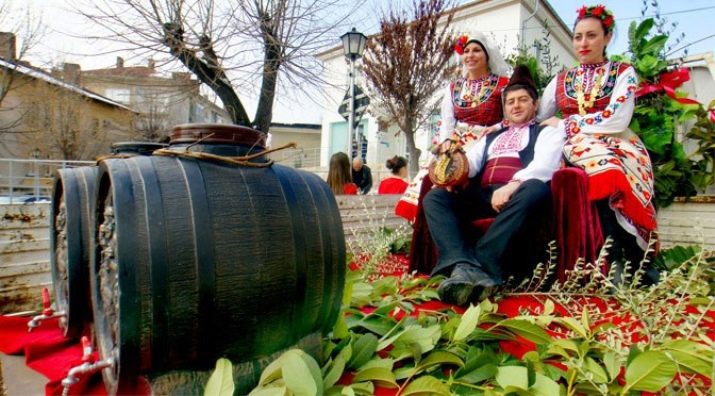
- Католики поминают святых Кирилла и Мефодия – просветителей, основателей славянской азбуки.

Как празднуют День святого Валентина?
По легенде Валентин – это римский священник-христианин, который, вопреки запрету правителя Рима, тайно проводил обряды венчания молодых пар, поддерживал их и всячески помогал. За ослушание священник был арестован и приговорен к смертной казни. Находясь в заключении, он влюбился в слепую дочь стражника, охраняющего его. Валентину удалось исцелить ее, после чего она обратилась в христианскую веру.


По приказу императора священника казнили за это 14 февраля. В этот же день, перед смертью, он оставил своей возлюбленной письмо, где признавался в своих чувствах. Внизу послания стояла подпись «Твой Валентин».

Спустя 200 лет этот день стали называть Днем Валентина или Валентинов день, а любовные послания – валентинками.


Во Франции
Несомненно, что Франция у большинства из нас ассоциируется с романтикой, красотой, изысканностью и шармом. Перед 14 Февраля даже воздух в этом городе приобретает мечтательный оттенок. Все витрины магазинов, бутиков и торговых центров пестрят ангелочками с изображением Купидона, сердцами, цветами. Многие люди для того чтобы сделать предложение своему любимому человеку, которое запомнится на всю жизнь, делают это на День Валентина.

В Великобритании
Давно сложился стереотип, что англичане бедны на проявление чувств. Однако в День святого Валентина даже они способны удивлять своих любимых. С давних времен мужчина в канун 14 Февраля старался оставить под дверью понравившейся ему девушки подарок. Если она отвечала ему взаимностью и принимала презент, то в ответ вручала яблоко, которое считается символом любви и красоты.

До сегодняшнего дня в Великобритании сохранился обычай гадать 14 февраля. Девушка с утра подбегает к окну и выглядывает своего суженого – какой парень пройдет первым, тот и будет ее милым. Молодые люди до сих пор верят в то, что именно в День святого Валентина вероятность встретить свою половинку самая высокая.

В Италии
Романтика является душевной потребностью итальянцев, которые проявляют ее везде: в музыке, кино, книгах, еде. Поэтому неудивительно, что праздник влюбленных в этой стране особенно любим и почитаем. Известный производитель шоколада специально к этому дню создал конфеты в ярко-красной обертке, внутри которой написаны любовные записки с признаниями.

В древности здесь 14 февраля отмечали Праздник плодородия и День богини Юноны, которая была покровительницей женщин и брачного союза.
Поэтому до сих пор считается, что этот день очень благоприятен для создания семьи. Влюбленные обмениваются обручальными кольцами, назначают друг другу романтические свидания, дарят разные милые подарки.

В Германии
Особенностью 14 Февраля в Германии является то, что немцы празднуют не только день влюбленных, но и душевнобольных.
Приготовления к празднованию Дня влюбленных в Германии начинается за несколько дней. Немцы, серьезные и педантичные по своему характеру, с восторгом, трепетом и присущей им организованностью начинают приобретать для любимых подарки, продумывают каждую мелочь романтического сюрприза.
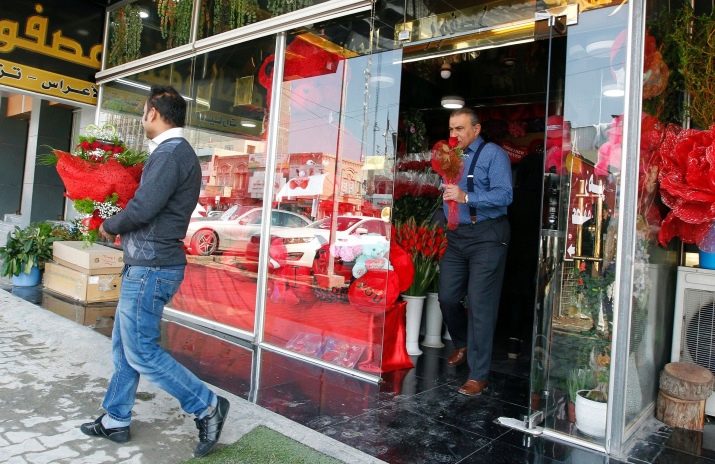
В Испании
Готовиться к празднику любви в Испании начинают за несколько месяцев, регулярно посещая магазины и сувенирные рынки в поисках оригинальных подарков. К торжеству готовится не только молодежь, не состоявшая в браке, но и те, кто прожил друг с другом не один год. Супружеские пары в этот день посвящают себя исключительно друг другу, обсуждают прошлые и настоящие события, строят планы на будущее, выражая этим безграничную преданность и доверие избраннику.

В Шотландии
Шотландия, которая на День святого Валентина выглядит как сказочная страна, может выступать примером того, как надо отмечать День любви. Люди всех возрастов собираются в группы, устраивают громкие и веселые торжества, прославляя одно из самых прекрасных чувств человечества – любовь.
По обычаю первая встреченная одинокая девушка (парень) могут стать спутником на всю жизнь. Если встречаются пары, то гуляние продолжают уже вместе.
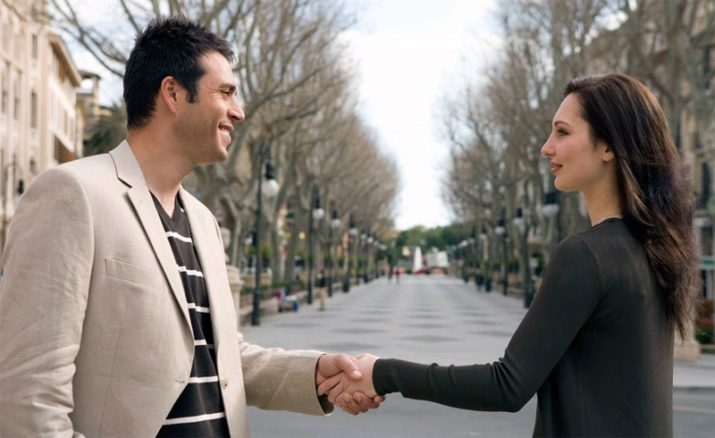
В США
Празднование Дня влюбленных в Америке мало чем отличается от этого действа в других западных странах. Пары вручают друг другу классические подарки: игристые вина, цветы, ювелирные украшения, сладости в виде сердечка, которые символизируют полную отдачу чувств и эмоций своей половинке.

В школах в этот день проводят тематические мероприятия: сценки, пьесы, спектакли. Каждый класс украшают кружевными и вырезанными из бумаги сердечками, а друзьям и преподавателям дарят открытки и подарки ручной работы.
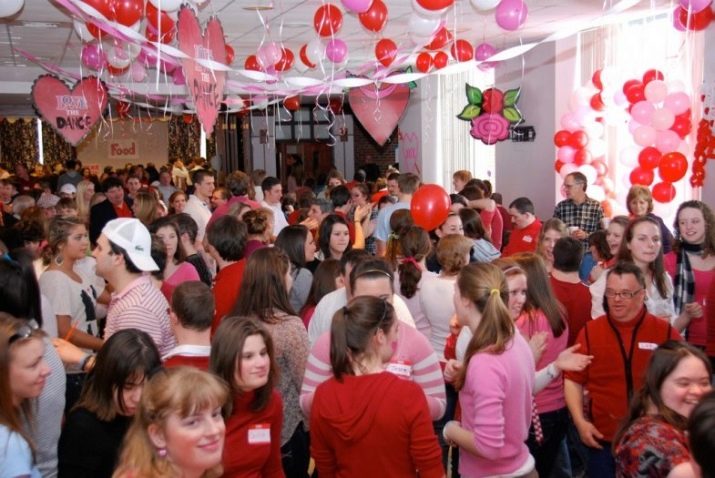
В России
В России на День святого Валентина организовывают всевозможные концерты, музыкальные и развлекательные программы, которые с удовольствием посещает не только молодежь, но и более старшее поколение. Магазины перед праздником предлагают огромное количество подарочных изделий, которые имеют тематическое направление.
Из подарков популярностью пользуются косметика, бижутерия, ювелирные украшения, цветы, сладости. Главное, чтобы выбранный подарок пришелся по душе любимому человеку.
Бумажные открытки уходят в прошлое, их место прочно заняли электронные аналоги.

В Нидерландах
День святого Валентина в Нидерландах празднуют немногие, считая его коммерческим ходом, а не праздником. Однако есть и те, которые с радостью готовы удивить и порадовать свою половинку 14 Февраля.
К выбору подарков нидерландцы относятся непритязательно, считая, что цветы и шоколад – вполне приемлемый вариант. Тем более что в цветах у Нидерландов нет недостатка: в многочисленных цветочных магазинах можно заказать любую композицию. Особо романтичные натуры имеют возможность поучаствовать в процессе создания сладости для своей возлюбленной в шоколадных мастерских.

В Бразилии
Горячим и эмоциональным бразильцам День влюбленных – еще один повод для страстных любовников и романтиков проявить свои чувства. Они устраивают пышные романтические ужины при свечах, задаривают любимых разными подарками. Одинокие молодые люди обмениваются фигурками Купидона, выражая таким способом свою симпатию. Супружеские пары дарят друг другу поздравительные открытки.

В Таиланде
14 Февраля таиландцы дарят друг другу подарки. Но в последние годы появилась тенденция преподносить сердца и букеты, сделанные из денежных купюр, номинал которых может быть разным.
К этому празднику в стране приурочивают разные мероприятия: выставки, конкурсы, фестивали.

В Сингапуре
День святого Валентина в Сингапуре имеет государственные масштабы и превращается в мегасобытие. Концерты, показы мод, музыкальные фестивали и ночные шоу привлекают в страну много туристов, с которыми сингапурцы радостно делят этот день.
Считается, что если в этот день связать себя узами брака, то семейная жизнь будет счастливой и долгой. Поэтому 14 февраля наблюдается настоящий ажиотаж по проведению свадебных церемоний.

Особое значение на День святого Валентина приобретают цветы, а именно красные розы и тюльпаны. Они свидетельствуют о страстных чувствах, которые мужчина испытывает по отношению к своей возлюбленной.

В Греции
Греческий мужчина, вручая женщине подарок на День святого Валентина, считает, что он поет ей любовный гимн. Однако также любит получать и ответные подарки, которые должны быть больше практичны, чем романтичны. Молодые люди весь день проводят вместе, и неважно где: дома, валяясь на диване, или в кинотеатре за просмотром увлекательного фильма.
Поражает изобилие подарков, которые в этот день принято дарить друг другу. В их качестве выступают книги, украшения, духи, портмоне, сумки, дизайнерские вещи.

В Индии
День святого Валентина в Индии – поистине феерический праздник, и готовиться к нему начинают заранее. Многочисленные фестивали, магазины, изобилующие всевозможными сувенирами и подарками в виде сердечек и фигурок Купидона, веселые конкурсы – далеко не весь список увеселительных развлечений, которые происходят в этот день.
Каждый надевает свой самый красивый наряд, демонстрируя этим свое отношение к любимому человеку. Гостиницы и рестораны, где молодые люди планируют отмечать праздник, бронируются на месяц вперед.
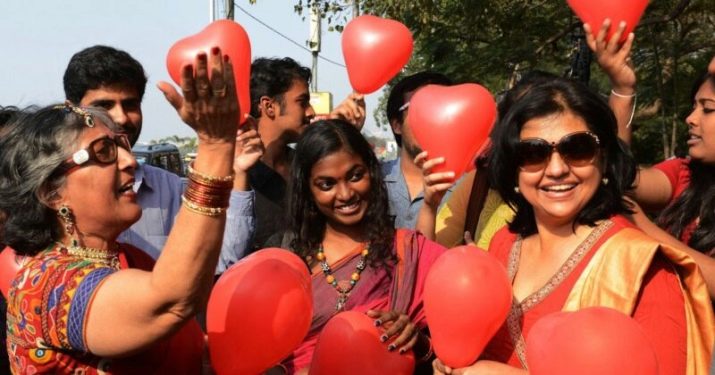
В Японии
В Японии отмечают День влюбленных 2 раза: 14 февраля – мужской праздник, а 14 марта – женский, так называемый Белый день. Японки мужчинам дарят шоколад. При этом существует две его разновидности: один предназначен для родственников, друзей и знакомых, а второй – для любимых мужчин.

Что дарят вторым половинкам?
Подарки ко Дню святого Валентина могут быть самыми разными, начиная от милых безделушек и заканчивая внушительными по стоимости вещами и презентами. В любом случае подарок – проявление теплых, сердечных чувств к избраннику или избраннице.
Особой популярностью пользуются цветы, духи, сладости, ювелирные украшения, которые актуальны в любом случае. Главное, чтобы любимый человек остался довольным и оценил старания своего партнера.
День святого Валентина – неоднозначный праздник, который пышно и церемониально отмечают лишь в некоторых странах. Однако он является еще одним поводом для того, чтобы удивить и порадовать любимого человека, услышав от него в ответ такие необходимые для каждого человека слова: «Я люблю тебя».

Как отмечают 14 Февраля в разных странах, смотрите в видео.
Праздники 14 февраля
День cвятого Валентина (День всех влюбленных)

В День cвятого Валентина принято дарить Валентинки
День святого Валентина, или День всех влюбленных — праздник, который отмечается 14 февраля во многих странах мира. Предположительно назван по имени одного из двух раннехристианских мучеников с именем Валентин — Валентин Интерамнский и Валентин Римский.
ФАКТ О ПРАЗДНИКЕ:
Первые «валентинки» создавались собственными руками. Самые талантливые писали акростихи, а позже в Британии начали печатать сборники стихов — влюбленные выбирали лучшие и переписывали их в «валентинку».
С этого и началось производство «валентинок» в промышленных масштабах. Эта идея возникла у американки Эстер Хауленд. Всего за год она продала открыток на сумму 5000 долларов.
ПОЗДРАВЛЕНИЕ С ПРАЗДНИКОМ:
В День святого Валентина принято желать любви. Но я пожелаю не просто любить и быть любимым человеком, а чтобы та самая любовь была искренней, крепкой и прочной. Желаю, чтобы сердце от радости и счастья билось в такт с сердцем любимой половинки, чтобы любовь вдохновляла на добрые и красивые поступки, чтобы отношения были наполнены пониманием и совместными мечтами.
Международный день безопасного интернета (Safer Internet Day)
Праздник отмечается каждую второй вторник февраля

Международный день безопасного интернета отмечают 5 февраля © pixabay.com
Всемирный день безопасного Интернета — праздник, отмечаемый в первый вторник февраля. Идея празднования принадлежит Еврокомиссии, которая была поддержана европейскими некоммерческими организациями European SchoolNet и Insafe. Цель праздника – информировать людей об ответственном и безопасном использовании Интернета.
ФАКТ О ПРАЗДНИКЕ:
Интернет-безопасность — это отрасль компьютерной безопасности, связанная специальным образом не только с Интернетом, но и с сетевой безопасностью, поскольку она применяется к другим приложениям или операционным системам в целом. Ее цель — установить правила и принять меры для предотвращения атак через Интернет.
АНЕКДОТ В ТЕМУ ПРАЗДНИКА:
Девочки, прекратите так фотошопить свои фотки! Что будет, если ты потеряешься? Как мы сможем тебя найти, если в инстаграме ты выглядишь как Вера Брежнева, а в жизни — как Николай Валуев.
День компьютерщика и программиста (Programmer’s Day)

Первый компьютер в мире выглядел весьма своеобразно © 24smi.org
В этот день в профессиональных кругах широко отмечается праздник — День Компьютерщика. Именно 14 февраля в далеком 1946 году во всем мире ученые и не только увидели первый электронный компьютер, который действительно работал — ENIAC I (Электрический числовой интегратор и калькулятор).
АНЕКДОТ В ТЕМУ ПРАЗДНИКА:
Девушка — блондинка звонит своему парню:
— У меня компьютер не работает.
— А кнопочку такую большую нажимала?
— Нажимала.
— А шнур в розетку воткнут?
— Сейчас возьму фонарик, посмотрю…
— А фонарик зачем?
— Да свет пропал.
День памяти святого мученика Трифона
Святой мученик Трифон родился в одной из областей Малой Азии — Фригии, неподалеку от города Апамеи, в селении Кампсада. Его родители были простые и благочестивые крестьяне. В детстве он пас гусей и образования не получил. Но святой Трифон еще ребенком сподобился от Господа дара чудотворения: он изгонял бесов, исцелял недуги и своей молитвой творил многие иные благодеяния.
ФАКТ О ПРАЗДНИКЕ:
В настоящее время глава святого мученика хранится в городе Которе (Черногория), в кафедральном соборе святого Трифона. Часть мощей в 1803 году была оттуда привезена в Россию. В 1819 году эта святыня была вложена в трех ковчежцах в икону святого мученика Трифона, находившуюся в построенной в его честь церкви. Ныне эта икона находится в храме в честь Знамения Пресвятой Богородицы, у Рижского вокзала в Москве, неподалеку от места явления святого Трифона сокольнику.
Дистинг (Праздник пробуждения жизненных сил)

Дистинг — это праздник поздних морозов, посвященный победе света Солнца © vprazdniki.com
14 февраля отмечается один из главных языческих праздников — Дистинг. Это праздник поздних морозов, посвященный победе света Солнца над темными днями зимы. Он возвещает пробуждение жизненных сил, заснувших во время Зимней Ночи.
ФАКТ О ПРАЗДНИКЕ:
В день Дистинга язычники почитали бога Вали — покровителя плодородия и перерождения. Также в этот праздник было принято почитать предков. Дистинг — праздник поздних морозов, посвященный победе света Солнца над темными днями зимы. В этот день традиционно проходит семейное торжество с обменом подарками. День Дистинга считается подходящим временем для свадебных обетов и свадеб.
Католический день святых Кирилла и Мефодия

Католический день святых Кирилла и Мефодия отмечают 14 февраля © 24smi.org
Кирилл и Мефодий — просветители славян, покровители Европы, создатели славянской азбуки. Прежде всего, именно благодаря Кириллу и Мефодию мы имеем современный русский алфавит. Во-вторых, они первые перевели на славянский язык Священное писание и Богослужебные книги. Самое главное, что они сделали первые шаги к тому, что сегодня мы можем служить литургию на своем родном языке.
День войск радиационной, химической и биологической защиты Украины

День войск радиационной, химической и биологической защиты Украины
14 февраля ВС Украины отмечают День войск радиационной, химической, биологической защиты Согласно приказу Министра обороны Украины от 27.06.08, 14 февраля в Вооруженных силах Украины отмечается профессиональный праздник «День войск радиационной, химической, биологической защиты».
Трифон Перезимник

Если ночью в этот праздник небо ясное и на нем много звезд, то весна будет поздней © universemagazine.com
14 февраля 2019 года отмечается народный праздник Трифонов день. В народе его также называют Трифон-перезимник, Трифон-мышегон, Звездопад-перезимник, Трифон-мороз.
ФАКТ О ПРАЗДНИКЕ:
По традиции в Трифонов день 14 февраля многие молодые пары играют свадьбы. Народная примета гласит, что браки заключенные в этот день будут прочными и долговечными. Также этот обычай связан с приближающимся Великим постом, когда свадьбы, венчания, а также любые увеселительные мероприятия церковью не разрешаются.
День внеземной культуры (National Extraterrestrial Culture Day) в США
Праздник отмечается каждую второй вторник февраля
Отмечается во второй вторник февраля с 2003 года.
Международный день чудаков-одиночек (International Quirkyalone Day)
Международный день чудаков-одиночек — это праздник романтики, дружбы и независимого духа. Это праздник всех видов любви: романтической, платонической, семейной и, конечно же, любви к себе.
Международный день дарения книг (International Book Giving Day)

Международный день дарения книг отмечают 14 февраля © pixabay.com
Международный день дарения книг 14 февраля отмечают не только влюбленные, но и любители чтения. Этот праздник – Международный день дарения книги (International Book Giving Day) – появился в 2012 году и призван объединять всех, кто дарит книги детям и прививает им любовь к чтению.
День маленьких перевоплощений
Всемирный день исцеления звуком (World Sound Healing Day)
Если вы не можете звучать в 12 часов дня, то звучание в любое время в течение 14 февраля 2020 года поможет создать позитивный сдвиг и изменить нашу планету в Международный день исцеления звуком.
День распространения информации о врожденном пороке сердца
День психически больных людей в Германии
День шоколадных конфет с кремом в США
День рождения французского языка
Французский язык — язык французов (официальный язык Франции), франкоязычного населения Бельгии, Швейцарии (главным образом, во франкоязычной части — Романдии), Канады (главным образом, в Квебеке), в которых является одним из официальных. Французским языком пользуется население многих государств Африки, Карибского бассейна (Гаити и другие), Французской Гвианы, в том числе и в качестве официального языка. Относится к индоевропейской семье языков (романская группа, галло-романская подгруппа).
День влюбленных в библиотеку (Library Lovers Day) в США
День любителей библиотек отмечается 14 февраля каждого года в честь библиотек, библиотекарей, любителей книг и любителей библиотек. В День любителей библиотек мы отмечаем прочные отношения между нашим сообществом и библиотеками. Это также дает возможность отметить тех, кто любит и поддерживает библиотеки, и напомнить лицам, принимающим решения, о том, как любимые и заветные библиотеки всем сообществом.
День поклонения родителям в Индии
День колеса обозрения (National Ferris Wheel Day) в США
День больных эпилепсией в Польше
Трифон Зарезан — праздник виноградарей в Болгарии
Своими корнями праздник, посвященный Трифону Зарезану, уходит в античные времена, когда болгарские земли заселяли племена фракийцев, более всех богов почитавших Диониса — бога вина и виноградных лоз. Пришедшие в 7 веке в северо-восточную часть Балканского полуострова предки современных болгар переняли фракийские традиции виноделия и виноградарства. На языческие традиции в народном сознании наложился впоследствии праздник виноградарей.
День памяти коммунистических мучеников в Ираке
День генералиссимуса в КНДР
Генералиссимус КНДР — высшее воинское звание в вооруженных силах КНДР. Стоит выше маршала КНДР. Звание было введено в 1992 в честь восьмидесятилетия Ким Ир Сена и в том же году ему присвоено, а в 2012 году в год семидесятилетия посмертно присвоено Ким Чен Иру.
День памяти Рафика Харири в Ливане
Рафик Харири — ливанский миллиардер и политический деятель. Погиб в результате покушения.
В этот день именины празднуют: Тимофей, Трифон, Петр, Давид, Секунд, Василий, Анастасий, Семен, Вендимиан, Карион, Перпетуя, Ревокат, Сатир, Сатурнил (Саторнил), Феион, Фелицитата, Фелиция















